Friday, February 28, 2014
Don't like what I write? Don't read it.
People
have written me suggesting I stop using words like "imperialism," "Dumb
Donkey," "Democratic Party hack," "foundation funded outfit," "company
mole," "greedy bastards," "warmonger," "millionaire labor leader,"
"racist white mobsters," "goddamn," "the Israeli killing machine," and
so on and so forth.
I never really know how to respond to these "concerns."
My position, quite frankly, and what I tell those complaining, is that they aren't being forced to read anything I write and if they disagree with what I write to simply respond instead of taking these cheap shots.
Usually, I think, although I can't explain the motives of others, is that this is being used as a way to try to try silence and censor me because there is disagreement with my ideas--- and instead of expressing their disagreement with me, it is just simpler for them to try to pressure me not to state my views.
I bring this up because Ken Martin, the Chair of the Minnesota Democratic Farmer-Labor Party, recently told a group of people they should "monitor" my FaceBook posts and my blog posts and file complaints with my Internet Service Provider, Blogger.com and FaceBook anytime they found anything that might be considered "offensive" and in violation of their established standards.
What a morally, ethically and intellectually bankrupt way to participate in the political process.
Why doesn't this piece of donkey dung just come out and post his own responses to me? Goddamn chicken shit... Bakkk, Bak, Bak, Bak, Bak, Baaakkkk.
I never really know how to respond to these "concerns."
My position, quite frankly, and what I tell those complaining, is that they aren't being forced to read anything I write and if they disagree with what I write to simply respond instead of taking these cheap shots.
Usually, I think, although I can't explain the motives of others, is that this is being used as a way to try to try silence and censor me because there is disagreement with my ideas--- and instead of expressing their disagreement with me, it is just simpler for them to try to pressure me not to state my views.
I bring this up because Ken Martin, the Chair of the Minnesota Democratic Farmer-Labor Party, recently told a group of people they should "monitor" my FaceBook posts and my blog posts and file complaints with my Internet Service Provider, Blogger.com and FaceBook anytime they found anything that might be considered "offensive" and in violation of their established standards.
What a morally, ethically and intellectually bankrupt way to participate in the political process.
Why doesn't this piece of donkey dung just come out and post his own responses to me? Goddamn chicken shit... Bakkk, Bak, Bak, Bak, Bak, Baaakkkk.
Calls for U.S. Military Intervention in Syria Re-surfacing
Calls for U.S. Military Intervention in Syria Re-surfacing
Once again, R2P — responsibility to protect — is being used as a pretext for attacking Syria.
By Coleen Rowley, .

Homs. Image Wikimedia Commons
Cross-posted from the March newsletter of Veterans for Peace, Chapter 27.
The propaganda that continues to flourish for war on Syria shows many Americans fail to understand the problems posed by ”US Empire-building” believing it to be an altruistic force, toppling other governments and starting wars for the good of all mankind. Two recent articles in the New York Times (NYT): “Use Force To Save Starving Syrians” and “U.S. Scolds Russia as It Weighs Options on Syrian War“ are typical of the concerted efforts underway to ramp up US military intervention despite overwhelming opposition voiced by Congress and the American public thwarting Obama’s plan to bomb Syria announced in late August last year.
The “U.S. Weighs Options” news piece is easier to expose since it employs an obviously twisted and one-sided reporting lens that puts the primary blame on Russia for the violent conflict in Syria. It was apparently fed to Michael R. Gordon and his NYT colleagues by anonymous Administration officials as well as the Washington Institute for Near East Policy, the neo-con think tank nefariously founded by the Israeli American Public Affairs Committee (AIPAC) to deceptively appear to be independent of its parent, the foreign-based lobby group. (AIPAC has been revealed by scholars as the most powerful force in recent decades on US foreign policy, repeatedly pushing the U.S. into wars for Israel.) It should be recalled that Gordon himself is the same NYT reporter who gave a big assist back in 2002 to Judith Miller, notoriously collaborating with Scooter Libby and other neoconservatives to gin up war on Iraq by writing false front page stories about Saddam’s WMD. Unfortunately Gordon never was held accountable (in contrast to Miller who was eventually forced out of the NYT and also did jail time, for covering for Libby’s other illegal leaks). It’s therefore not surprising that Gordon and others continue to carry water and blatantly skew the facts for AIPAC and the neocons.
The other push for increased military intervention in Syria, however, could be categorized as “neo-lib.” The “Use Force…” op-ed by long-time advocates of “Right to Protect (R2P)” and Syrian regime change, Danny Postel and Nader Hashemi, current heads of the University of Denver’s Korbel School of International Studies, is even more insidious. As their colleague, Professor Rob Prince, explains in his insightful counterpoint, “Military Humanitarian Intervention: the Shock Doctrine Applied to Syria:”
In calling for military intervention in Syria — something not even the U.S. military itself is particularly enthusiastic about — Hashemi and Postel cozy up, as they have before on Iran in 2009 and Libya in 2011, with the likes of AIPAC, along with this country’s band of intrepid and misdirected neoconservatives. These are the same elements that pushed this country into invading Iraq and continue to push the Obama Administration to intervene militarily in Syria.Close examination of the facts–rather than shock doctrine emotion–is indeed required because R2P is based on a form of ends-justify-the means, concocted utilitarianism, i.e. Orwellian-type propositions that killing can save lives, that war can bring human rights, democracy and peace. It’s not different from the prevalent argument that torture can be justified as saving lives or “we must bomb the village to save it,” designed to prey on people’s emotions instead of facilitating critical thinking based on actual facts or research.
These two writers urging U.S. military force admit “political interests” typically lie behind R2P interventions. But they fail to recognize how their own long-standing political interest in toppling the current Syrian government undercuts their own claimed morality mantel. It also casts doubt on their suggestion that such force and aerial bombardment would be used evenhandedly against both Syrian regime forces and/or rebel militias, upon whichever side blocks the delivery of food and humanitarian supplies. Any “humanitarian” proposal emanating from Obama and Kerry who similarly announced “Assad must go” from early on would naturally face equal skepticism. Russia and China certainly remember how they were deliberately misled in UN Security Council discussions to not veto what then U.S. Ambassador Susan Rice sold as a limited “no fly zone” humanitarian mission to protect Libyans in Benghazi but which morphed within days of that vote into thousands of NATO bombing sorties over six months to take out Qaddafi and force regime change upon Libya. In the case of Libya, a right to “protect” turned out to mean the right to destroy. That probably explains why Postel-Hashemi do not point to Libya as their precedent for R2P success but, rather bizarrely, to Somalia and “Black Hawk Down.”
It’s long been observed that “truth is the first casualty of war.” So fact checking is needed when these R2P-regime change proponents point to the “humanitarian nightmare in Syria — replete with refugee flows, sarin gas, barrel bombs, and “industrial-scale” killings and torture, (which have) horrified the world.” Facts are inherently scarce in the fog of war enveloping Syrian atrocities. Eventually truth will emerge. But for starters, very little solid evidence exists as to who was responsible for the sarin attack on Ghouta on August 21. Despite John Kerry’s initially bold claims that the U.S. possessed “undeniable” evidence that Assad’s forces were responsible “beyond any reasonable doubt,” Seymour Hersh and other investigative journalists have reported that US intelligence was never conclusive. Evidence does exist of a few hundred Syrians dying in the August chemical attack but the (overly precise) figure the U.S. cited of 1429 victims is now widely viewed as exaggerated since it stemmed from a sloppy, rushed counting of shrouded images in various videos by US intelligence agencies.
The U.N. too has already backtracked on several of its original key findings about this sarin attack. Whatever bits of intelligence the U.S. does possess remain classified and secret to this day so it’s hard to assess but, at very least, the trajectory “vector analysis”–referred to by our United Nations Ambassador Samantha Powers and relied upon by the NYT and Human Rights Watch (HRW)–has been significantly discredited. The NYT had to print a retraction of its initial map showing trajectories of sarin-loaded missiles traveling 9 kilometers after it was determined the range of the actual missiles used was no more than 2.5 kilometers.
The NYT’s and HRW’s concocted maps were further undercut by the fact that no sarin was found at the site of the supposed missile landing in Moadamiya, south of Damascus. The only rocket tested and found to be carrying Sarin was the one that landed in Zalmalka/Ein Tarma, east of Damascus. (HRW’s errors and, even worse, their failure to admit these errors when they knew their map was being relied upon to justify US bombing of Syria, also calls their agenda into question. HRW’s hypocrisy using human rights as a pretext for military intervention and its directors’ conflicts of interests is documented elsewhere.)
In late January, 2014, two weapons experts challenged the ballistic data, concluding ”that under no circumstances can Syria be held accountable for the massacre” (see Flawed US intelligence on Ghouta massacre based on MIT report: “Possible Implications of Faulty US Technical Intelligence in the Damascus Nerve Agent Attack of August 21, 2013″)
War crimes should of course always be brought to light and prosecuted. But the recent “smoking gun” report accusing Assad and conveniently made public just when the Geneva II peace negotiations were getting underway is suspicious on many levels. Reportedly commissioned and funded by Qatar, a country arming and funding Syria’s rebels, the report lacks independent, unbiased sources and omits evidence of war crimes being committed by rebel factions in Syria. (Also see “Is Syrian peace conference laying the foundation for war?“)
It’s no secret that the U.S. has a long history of toppling governments that it doesn’t like, even democratically elected ones. And Syria is not the only place right now where the official goal is regime change! The coup orchestration department is working overtime these days with reports of U.S. attempts to topple governments in Venezuela and the Ukraine. (U.S. meddling in the latter, despite the complexity of the situation—see here and here, was recently confirmed through interceptions of Assistant Secretary of State Victoria Nuland, formerly Dick Cheney’s principal deputy foreign policy advisor and married to neocon Robert Kagan, co-founder of the Project for the New American Century.)
The use (abuse) of human rights law as justification for orchestrating such “regime changes” in Syria and around the world exemplifies a dangerous form of hypocrisy as it serves to deprive these international principles of legitimacy.
As retired CIA analyst Paul Pillar recently wrote, it is a mistake to see “the United States as an omnipotent global savior or policeman. We ought to bear this principle in mind in contemplating policy about problems anywhere on the globe. It certainly should be borne in mind with the Middle East, where there is a still fairly recent history of forceful U.S. action doing more harm than good…”
In May of 2002, Coleen Rowley
brought some of the FBI’s pre 9/11 lapses to light and testified to the
Senate Judiciary Committee about some of the endemic problems facing the
FBI and the intelligence community. Rowley’s memo to FBI Director
Robert Mueller in connection with the Joint Intelligence Committee’s
Inquiry led to a two-year long Department of Justice Inspector General
investigation. She was one of three whistleblowers chosen as persons of
the year by TIME magazine. She currently works with the Veterans for Peace chapter in Minneapolis, Minnesota.
THE RALEIGH DEMONSTRATION: "FORWARD TOGETHER, NOT ONE STEP BACK!"
THE RALEIGH DEMONSTRATION: "FORWARD TOGETHER, NOT ONE STEP BACK!"
This chant repeated again and again by tens of thousands in Raleigh on Feb. 8, 2014 energized and inspired all who rallied and marched up Fayetteville Street toward the North Carolina capitol. We were young and old, black, brown and white, gay and straight, men, women and children steadfast in our belief in justice and equality and committed to peaceful, non-violent action. We were members of unions, churches, mosques, and synagogues, civil rights, women's rights, workers' rights, and environmental organizations. We came from all walks of life and all political persuasions, all participating in the Moral Monday March and Rally to restore voting rights, women's reproductive health rights, marriage equality, worker and environmental protections.
We were marching against repressive legislation that has robbed us of necessary rights and protections that we have come to expect as basic human rights, and hope to expand. Signs displayed messages such as "Stop the War on Women," "Healthcare is a Human Right," "Welcome to North Carolina. Turn Your Watch Back 50 Years." This was not the first Moral Monday march nor will it be the last. But it was the largest so far in this growing movement that has spread beyond the borders of North Carolina. It was also the largest march for civil rights and voting rights since the 1965 march in Selma, Alabama. More than 80,000 strong we marched to say, "We are united and together we are powerful."
The march and rally was both to protest the right-wing policies of the North Carolina government and to commemorate the eighth anniversary of the HKonJ (Historic Thousands on Jones Street, where the NC legislature sits) coalition. Since taking over the legislature in 2010 and the governorship in 2012, controlling the state government for the first time in over a century, North Carolina Republicans eliminated the earned-income tax credit for 900,000 North Carolinians; refused Medicaid coverage for 500,000; ended federal unemployment benefits for 170,000; cut pre-K for 30,000 children while shifting $90 million from public education to voucher schools; slashed taxes for the top 5% while raising taxes on the bottom 95%; axed public financing of judicial races; prohibited death row inmates from challenging racially discriminatory verdicts; passed one of the country's most Draconian anti-choice laws; and enacted the country's worst voter suppression laws, which mandates strict voter ID, cuts early voting and eliminates same-day registration, among other things.
The Forward Together Moral Movement has put together a long-term strategy which includes litigation to challenge the voter suppression bill, voter registration, outreach, non-violent direct action, and a watchdog group, which ensures that any legislation put forth in the state has the interest of the people at heart. "Freedom Summer 2014" is also planned to energize the youth vote. Five demands have been put forth by the coalition:
1) Secure pro-labor, anti-poverty policies that insure economic sustainability;
2) Provide well-funded, quality public education for all;
3) Stand up for the health of every North Carolinian by promoting health care access and environmental justice across all the state's communities;
4) Address the continuing inequalities in the criminal justice system and ensure equality under the law for every person, regardless of race, class, creed, documentation or sexual preference;
5) Protect and expand voting rights for people of color, women, immigrants, the elderly and students to safeguard fair democratic representation.
Members of the Labor Fightback Network were participants in the day's activities along with the Southern Workers' Assembly, Black Workers for Justice, South Carolina AFL-CIO, Savannah Central Labor Council, Raise Up, UE Local 150, Farm Labor Organizing Committee (FLOC), NJ State Industrial Union Council, SEIU, and numerous other unions and community groups. The Southern Workers Assembly's call to join the Moral Monday March and Rally included: Union Rights highlighting the right to Collective Bargaining; Living Wages for all Workers; Protect Voting Rights; Stop Attack on Unemployment Coverage; Expand Medicaid; Fully Fund all Public Services; End Systematic Racism, Sexism and Homophobia; and more.
The Southern Workers Assembly meeting held after the march emphasized grassroots empowerment and included a panel of workers from FLOC, UE Local 150, Raise Up fast food workers, and a teaching assistant. They discussed their campaigns for higher wages, health and safety, environmental justice, and a workers' bill of rights, http://southernworker.org at the state and municipal level. In the discussion following the panel others brought up the importance of independent politics, the need to repeal Taft-Hartley, and the recent resolution to Organize the South passed unanimously at the national AFL-CIO convention in September of last year, with slight modifications.
That resolution was approved by members of the Savannah Regional Central Labor Council based on a resolution drafted by a committee chaired by Brett Hulme, President of the Council, and supported by Black Workers for Justice, Southern Workers Assembly and many other groups. This followed the Labor Fightback Network's founding conference held in NJ last year in which the need to pour resources into organizing the South was the subject of speeches and workshops. Those present were encouraged to support the petition for those arrested and facing charges in the Moral Monday actions. These charges must be dropped. Sign the petition to Stop the Criminalization of the Right to Protest at http://southernworker.org/email-and-petitions/dropmoralmondayscharges/
It is important to note that in North Carolina, and in many other states, the roots of this wave of repressive legislation can be traced to ALEC, the American Legislative Exchange Council, known by many as the author of the infamous "Stand Your Ground" laws. ALEC was founded in 1973 as a clearinghouse to promote legislation at the state level and has since developed into a highly prominent corporate funded lobbying vehicle for advancing corporate interests, despite the fact that it is a tax deductible 501 (c) (3) public charity that has never reported any lobbying expenditures to the IRS.
ALEC develops model legislation which it promotes to state legislators at posh resorts throughout the U.S. A 2009 ALEC model is behind restrictive "Voter ID" legislation which limits the democratic influence of average Americans by disenfranchising disabled, low-income, elderly, people of color, and student voters. According to the Brennan Center for Justice, the Voter ID Act may have disenfranchised 5 million Americans during the 2012 elections, even though voter fraud is a virtually non-existent problem. "ALEC and its sponsors have an enduring mission to pass voter suppression laws that would impose barriers on direct democracy" veteran journalist John Nichols wrote in The Nation. At least ten Stand Your Ground laws were introduced in 2013 and two passed. Fifty two bills were introduced to enact or tighten Voter ID restrictions of which five passed. So much more could be said about ALEC's destructive agenda to undermine rights of workers and unions, reduce and/or deny medical benefits, enact Stand Your Ground laws, etc. To get more info, go to www.ALECExposed.org, a project of the Center for Media and Democracy.
North Carolina's Moral Monday Coalition gives us a blueprint to be followed and duplicated as widely as possible. Its strength is in its diversity and its broad appeal to social and economic justice. On the heels of the devastating UAW loss at the Chattanooga VW plant, it is evident that labor/community coalitions are needed more than ever. As we saw in the UAW election, right-wing anti-union money was funneled through local residents for opposition messages on billboards and other anti-union publicity. Perhaps a strong, united labor/community coalition voice could have countered the third-party political threats and intimidation factor more effectively. The broadest possible coalitions are needed to mount the necessary push-back against such right-wing attacks whether such assaults are targeted at labor, people of color, voters, women, students, seniors, immigrants, or the environment.
According to Saladin Muhammad from Black Workers for Justice and the Southern Workers Assembly, Moral Mondays have mobilized thousands and undercut the claim to moral high ground of the religious right, whose so-called moral agenda is racist, sexist, homophobic, xenophobic, and divisive, and tries to appeal mainly to the white working class. In contrast, the Forward Together Moral Movement seeks to unify, not divide. Rev. William Barber, President of the North Carolina NAACP, calls it an agenda-based coalition: anti-racism, anti-poverty, pro-justice. At the Feb 8 rally he said, "We must see ourselves as existing in society not as isolated selves but as part of the whole." And at the conclusion of the exuberant rally after a gray, cloudy morning, the sun burst forth affirming the hopeful, positive, forward thinking, and high spirited atmosphere of the event.
Issued by the Labor Fightback Network. For more information, please call 973-944-8975 or email conference@laborfightback.org or write Labor Fightback Network, P.O. Box 187, Flanders, NJ 07836 or visit our website at laborfightback.org. Facebook link : https://www.facebook.com/laborfightback
This chant repeated again and again by tens of thousands in Raleigh on Feb. 8, 2014 energized and inspired all who rallied and marched up Fayetteville Street toward the North Carolina capitol. We were young and old, black, brown and white, gay and straight, men, women and children steadfast in our belief in justice and equality and committed to peaceful, non-violent action. We were members of unions, churches, mosques, and synagogues, civil rights, women's rights, workers' rights, and environmental organizations. We came from all walks of life and all political persuasions, all participating in the Moral Monday March and Rally to restore voting rights, women's reproductive health rights, marriage equality, worker and environmental protections.
We were marching against repressive legislation that has robbed us of necessary rights and protections that we have come to expect as basic human rights, and hope to expand. Signs displayed messages such as "Stop the War on Women," "Healthcare is a Human Right," "Welcome to North Carolina. Turn Your Watch Back 50 Years." This was not the first Moral Monday march nor will it be the last. But it was the largest so far in this growing movement that has spread beyond the borders of North Carolina. It was also the largest march for civil rights and voting rights since the 1965 march in Selma, Alabama. More than 80,000 strong we marched to say, "We are united and together we are powerful."
The march and rally was both to protest the right-wing policies of the North Carolina government and to commemorate the eighth anniversary of the HKonJ (Historic Thousands on Jones Street, where the NC legislature sits) coalition. Since taking over the legislature in 2010 and the governorship in 2012, controlling the state government for the first time in over a century, North Carolina Republicans eliminated the earned-income tax credit for 900,000 North Carolinians; refused Medicaid coverage for 500,000; ended federal unemployment benefits for 170,000; cut pre-K for 30,000 children while shifting $90 million from public education to voucher schools; slashed taxes for the top 5% while raising taxes on the bottom 95%; axed public financing of judicial races; prohibited death row inmates from challenging racially discriminatory verdicts; passed one of the country's most Draconian anti-choice laws; and enacted the country's worst voter suppression laws, which mandates strict voter ID, cuts early voting and eliminates same-day registration, among other things.
The Forward Together Moral Movement has put together a long-term strategy which includes litigation to challenge the voter suppression bill, voter registration, outreach, non-violent direct action, and a watchdog group, which ensures that any legislation put forth in the state has the interest of the people at heart. "Freedom Summer 2014" is also planned to energize the youth vote. Five demands have been put forth by the coalition:
1) Secure pro-labor, anti-poverty policies that insure economic sustainability;
2) Provide well-funded, quality public education for all;
3) Stand up for the health of every North Carolinian by promoting health care access and environmental justice across all the state's communities;
4) Address the continuing inequalities in the criminal justice system and ensure equality under the law for every person, regardless of race, class, creed, documentation or sexual preference;
5) Protect and expand voting rights for people of color, women, immigrants, the elderly and students to safeguard fair democratic representation.
Members of the Labor Fightback Network were participants in the day's activities along with the Southern Workers' Assembly, Black Workers for Justice, South Carolina AFL-CIO, Savannah Central Labor Council, Raise Up, UE Local 150, Farm Labor Organizing Committee (FLOC), NJ State Industrial Union Council, SEIU, and numerous other unions and community groups. The Southern Workers Assembly's call to join the Moral Monday March and Rally included: Union Rights highlighting the right to Collective Bargaining; Living Wages for all Workers; Protect Voting Rights; Stop Attack on Unemployment Coverage; Expand Medicaid; Fully Fund all Public Services; End Systematic Racism, Sexism and Homophobia; and more.
The Southern Workers Assembly meeting held after the march emphasized grassroots empowerment and included a panel of workers from FLOC, UE Local 150, Raise Up fast food workers, and a teaching assistant. They discussed their campaigns for higher wages, health and safety, environmental justice, and a workers' bill of rights, http://southernworker.org at the state and municipal level. In the discussion following the panel others brought up the importance of independent politics, the need to repeal Taft-Hartley, and the recent resolution to Organize the South passed unanimously at the national AFL-CIO convention in September of last year, with slight modifications.
That resolution was approved by members of the Savannah Regional Central Labor Council based on a resolution drafted by a committee chaired by Brett Hulme, President of the Council, and supported by Black Workers for Justice, Southern Workers Assembly and many other groups. This followed the Labor Fightback Network's founding conference held in NJ last year in which the need to pour resources into organizing the South was the subject of speeches and workshops. Those present were encouraged to support the petition for those arrested and facing charges in the Moral Monday actions. These charges must be dropped. Sign the petition to Stop the Criminalization of the Right to Protest at http://southernworker.org/email-and-petitions/dropmoralmondayscharges/
It is important to note that in North Carolina, and in many other states, the roots of this wave of repressive legislation can be traced to ALEC, the American Legislative Exchange Council, known by many as the author of the infamous "Stand Your Ground" laws. ALEC was founded in 1973 as a clearinghouse to promote legislation at the state level and has since developed into a highly prominent corporate funded lobbying vehicle for advancing corporate interests, despite the fact that it is a tax deductible 501 (c) (3) public charity that has never reported any lobbying expenditures to the IRS.
ALEC develops model legislation which it promotes to state legislators at posh resorts throughout the U.S. A 2009 ALEC model is behind restrictive "Voter ID" legislation which limits the democratic influence of average Americans by disenfranchising disabled, low-income, elderly, people of color, and student voters. According to the Brennan Center for Justice, the Voter ID Act may have disenfranchised 5 million Americans during the 2012 elections, even though voter fraud is a virtually non-existent problem. "ALEC and its sponsors have an enduring mission to pass voter suppression laws that would impose barriers on direct democracy" veteran journalist John Nichols wrote in The Nation. At least ten Stand Your Ground laws were introduced in 2013 and two passed. Fifty two bills were introduced to enact or tighten Voter ID restrictions of which five passed. So much more could be said about ALEC's destructive agenda to undermine rights of workers and unions, reduce and/or deny medical benefits, enact Stand Your Ground laws, etc. To get more info, go to www.ALECExposed.org, a project of the Center for Media and Democracy.
North Carolina's Moral Monday Coalition gives us a blueprint to be followed and duplicated as widely as possible. Its strength is in its diversity and its broad appeal to social and economic justice. On the heels of the devastating UAW loss at the Chattanooga VW plant, it is evident that labor/community coalitions are needed more than ever. As we saw in the UAW election, right-wing anti-union money was funneled through local residents for opposition messages on billboards and other anti-union publicity. Perhaps a strong, united labor/community coalition voice could have countered the third-party political threats and intimidation factor more effectively. The broadest possible coalitions are needed to mount the necessary push-back against such right-wing attacks whether such assaults are targeted at labor, people of color, voters, women, students, seniors, immigrants, or the environment.
According to Saladin Muhammad from Black Workers for Justice and the Southern Workers Assembly, Moral Mondays have mobilized thousands and undercut the claim to moral high ground of the religious right, whose so-called moral agenda is racist, sexist, homophobic, xenophobic, and divisive, and tries to appeal mainly to the white working class. In contrast, the Forward Together Moral Movement seeks to unify, not divide. Rev. William Barber, President of the North Carolina NAACP, calls it an agenda-based coalition: anti-racism, anti-poverty, pro-justice. At the Feb 8 rally he said, "We must see ourselves as existing in society not as isolated selves but as part of the whole." And at the conclusion of the exuberant rally after a gray, cloudy morning, the sun burst forth affirming the hopeful, positive, forward thinking, and high spirited atmosphere of the event.
Issued by the Labor Fightback Network. For more information, please call 973-944-8975 or email conference@laborfightback.org or write Labor Fightback Network, P.O. Box 187, Flanders, NJ 07836 or visit our website at laborfightback.org. Facebook link : https://www.facebook.com/laborfightback
Thursday, February 27, 2014
This is no recovery, this is a bubble – and it will burst
This guy has written a very intelligent article.
He is bound and determined to help the capitalists save capitalism... but, wouldn't you know it--- no capitalists will listen to him.
No matter what other things this guy says--- no matter if he is right or wrong about most everything in what he has written here; one thing I agree with... his conclusion:
"We are heading for trouble."
For anyone to think otherwise is almost laughable except so many people are being hurt--- and those that one would laugh at are actually running the world.
http://www.theguardian.com/commentisfree/2014/feb/24/recovery-bubble-crash-uk-us-investors
He is bound and determined to help the capitalists save capitalism... but, wouldn't you know it--- no capitalists will listen to him.
No matter what other things this guy says--- no matter if he is right or wrong about most everything in what he has written here; one thing I agree with... his conclusion:
"We are heading for trouble."
For anyone to think otherwise is almost laughable except so many people are being hurt--- and those that one would laugh at are actually running the world.
http://www.theguardian.com/commentisfree/2014/feb/24/recovery-bubble-crash-uk-us-investors
This is no recovery, this is a bubble – and it will burst
Stock
market bubbles of historic proportions are developing in the US and UK
markets. With policymakers unwilling to introduce tough regulation,
we're heading for trouble.
Ha-Joon Chang
The Guardian,
Ha-Joon Chang
The Guardian,
According to the stock market, the UK economy is in a boom. Not just
any old boom, but a historic one. On 28 October 2013, the FTSE 100 index
hit 6,734, breaching the level achieved at the height of the economic
boom before the 2008 global financial crisis (that was 6,730, recorded
in October 2007).
Since then, it has had ups and downs, but on 21 February 2014 the FTSE 100 climbed to a new height of 6,838. At this rate, it may soon surpass the highest ever level reached since the index began in 1984 – that was 6,930, recorded in December 1999, during the heady days of the dotcom bubble.
The current levels of share prices are extraordinary considering the UK economy has not yet recovered the ground lost since the 2008 crash; per capita income in the UK today is still lower than it was in 2007. And let us not forget that share prices back in 2007 were themselves definitely in bubble territory of the first order.
The situation is even more worrying in the US. In March 2013, the Standard & Poor 500 stock market index reached the highest ever level, surpassing the 2007 peak (which was higher than the peak during the dotcom boom), despite the fact that the country's per capita income had not yet recovered to its 2007 level. Since then, the index has risen about 20%, although the US per capita income has not increased even by 2% during the same period. This is definitely the biggest stock market bubble in modern history.
Even more extraordinary than the inflated prices is that, unlike in the two previous share price booms, no one is offering a plausible narrative explaining why the evidently unsustainable levels of share prices are actually justified.
During the dotcom bubble, the predominant view was that the new information technology was about to completely revolutionise our economies for good. Given this, it was argued, stock markets would keep rising (possibly forever) and reach unprecedented levels. The title of the book, Dow 36,000: The New Strategy for Profiting from the Coming Rise in the Stock Market, published in the autumn of 1999 when the Dow Jones index was not even 10,000, very well sums up the spirit of the time.
Similarly, in the runup to the 2008 crisis, inflated asset prices were justified in terms of the supposed progresses in financial innovation and in the techniques of economic policy.
It was argued that financial innovation – manifested in the alphabet soup of derivatives and structured financial assets, such as MBS, CDO, and CDS – had vastly improved the ability of financial markets to "price" risk correctly, eliminating the possibility of irrational bubbles. On this belief, at the height of the US housing market bubble in 2005, both Alan Greenspan (the then chairman of the Federal Reserve Board) and Ben Bernanke (the then chairman of the Council of Economic Advisers to the President and later Greenspan's successor) publicly denied the existence of a housing market bubble – perhaps except for some "froth" in a few localities, according to Greenspan.
At the same time, better economic theory – and thus better techniques of economic policy – was argued to have allowed policymakers to iron out those few wrinkles that markets themselves cannot eliminate. Robert Lucas, the leading free-market economist and winner of the 1995 Nobel prize in economics, proudly declared in 2003 that "the problem of depression prevention has been solved". In 2004, Ben Bernanke (yes, it's him again) argued that, probably thanks to better theory of monetary policy, the world had entered the era of "great moderation", in which the volatility of prices and outputs is minimised.
This time around, no one is offering a new narrative justifying the new bubbles because, well, there isn't any plausible story. Those stories that are generated to encourage the share price to climb to the next level have been decidedly unambitious in scale and ephemeral in nature: higher-than-expected growth rates or number of new jobs created; brighter-than-expected outlook in Japan, China, or wherever; the arrival of the "super-dove" Janet Yellen as the new chair of the Fed; or, indeed, anything else that may suggest the world is not going to end tomorrow.
Few stock market investors really believe in these stories. Most investors know that current levels of share prices are unsustainable; it is said that George Soros has already started betting against the US stock market. They are aware that share prices are high mainly because of the huge amount of money sloshing around thanks to quantitative easing (QE), not because of the strength of the underlying real economy. This is why they react so nervously to any slight sign that QE may be wound down on a significant scale.
However, stock market investors pretend to believe – or even have to pretend to believe – in those feeble and ephemeral stories because they need those stories to justify (to themselves and their clients) staying in the stock market, given the low returns everywhere else.
The result, unfortunately, is that stock market bubbles of historic proportion are developing in the US and the UK, the two most important stock markets in the world, threatening to create yet another financial crash. One obvious way of dealing with these bubbles is to take the excessive liquidity that is inflating them out of the system through a combination of tighter monetary policy and better financial regulation against stock market speculation (such as a ban on shorting or restrictions on high-frequency trading). Of course, the danger here is that these policies may prick the bubble and create a mess.
In the longer run, however, the best way to deal with these bubbles is to revive the real economy; after all, "bubble" is a relative concept and even a very high price can be justified if it is based on a strong economy. This will require a more sustainable increase in consumption based on rising wages rather than debts, greater productive investments that will expand the economy's ability to produce, and the introduction of financial regulation that will make banks lend more to productive enterprises than to consumers. Unfortunately, these are exactly the things that the current policymakers in the US and the UK don't want to do.
We are heading for trouble.
Since then, it has had ups and downs, but on 21 February 2014 the FTSE 100 climbed to a new height of 6,838. At this rate, it may soon surpass the highest ever level reached since the index began in 1984 – that was 6,930, recorded in December 1999, during the heady days of the dotcom bubble.
The current levels of share prices are extraordinary considering the UK economy has not yet recovered the ground lost since the 2008 crash; per capita income in the UK today is still lower than it was in 2007. And let us not forget that share prices back in 2007 were themselves definitely in bubble territory of the first order.
The situation is even more worrying in the US. In March 2013, the Standard & Poor 500 stock market index reached the highest ever level, surpassing the 2007 peak (which was higher than the peak during the dotcom boom), despite the fact that the country's per capita income had not yet recovered to its 2007 level. Since then, the index has risen about 20%, although the US per capita income has not increased even by 2% during the same period. This is definitely the biggest stock market bubble in modern history.
Even more extraordinary than the inflated prices is that, unlike in the two previous share price booms, no one is offering a plausible narrative explaining why the evidently unsustainable levels of share prices are actually justified.
During the dotcom bubble, the predominant view was that the new information technology was about to completely revolutionise our economies for good. Given this, it was argued, stock markets would keep rising (possibly forever) and reach unprecedented levels. The title of the book, Dow 36,000: The New Strategy for Profiting from the Coming Rise in the Stock Market, published in the autumn of 1999 when the Dow Jones index was not even 10,000, very well sums up the spirit of the time.
Similarly, in the runup to the 2008 crisis, inflated asset prices were justified in terms of the supposed progresses in financial innovation and in the techniques of economic policy.
It was argued that financial innovation – manifested in the alphabet soup of derivatives and structured financial assets, such as MBS, CDO, and CDS – had vastly improved the ability of financial markets to "price" risk correctly, eliminating the possibility of irrational bubbles. On this belief, at the height of the US housing market bubble in 2005, both Alan Greenspan (the then chairman of the Federal Reserve Board) and Ben Bernanke (the then chairman of the Council of Economic Advisers to the President and later Greenspan's successor) publicly denied the existence of a housing market bubble – perhaps except for some "froth" in a few localities, according to Greenspan.
At the same time, better economic theory – and thus better techniques of economic policy – was argued to have allowed policymakers to iron out those few wrinkles that markets themselves cannot eliminate. Robert Lucas, the leading free-market economist and winner of the 1995 Nobel prize in economics, proudly declared in 2003 that "the problem of depression prevention has been solved". In 2004, Ben Bernanke (yes, it's him again) argued that, probably thanks to better theory of monetary policy, the world had entered the era of "great moderation", in which the volatility of prices and outputs is minimised.
This time around, no one is offering a new narrative justifying the new bubbles because, well, there isn't any plausible story. Those stories that are generated to encourage the share price to climb to the next level have been decidedly unambitious in scale and ephemeral in nature: higher-than-expected growth rates or number of new jobs created; brighter-than-expected outlook in Japan, China, or wherever; the arrival of the "super-dove" Janet Yellen as the new chair of the Fed; or, indeed, anything else that may suggest the world is not going to end tomorrow.
Few stock market investors really believe in these stories. Most investors know that current levels of share prices are unsustainable; it is said that George Soros has already started betting against the US stock market. They are aware that share prices are high mainly because of the huge amount of money sloshing around thanks to quantitative easing (QE), not because of the strength of the underlying real economy. This is why they react so nervously to any slight sign that QE may be wound down on a significant scale.
However, stock market investors pretend to believe – or even have to pretend to believe – in those feeble and ephemeral stories because they need those stories to justify (to themselves and their clients) staying in the stock market, given the low returns everywhere else.
The result, unfortunately, is that stock market bubbles of historic proportion are developing in the US and the UK, the two most important stock markets in the world, threatening to create yet another financial crash. One obvious way of dealing with these bubbles is to take the excessive liquidity that is inflating them out of the system through a combination of tighter monetary policy and better financial regulation against stock market speculation (such as a ban on shorting or restrictions on high-frequency trading). Of course, the danger here is that these policies may prick the bubble and create a mess.
In the longer run, however, the best way to deal with these bubbles is to revive the real economy; after all, "bubble" is a relative concept and even a very high price can be justified if it is based on a strong economy. This will require a more sustainable increase in consumption based on rising wages rather than debts, greater productive investments that will expand the economy's ability to produce, and the introduction of financial regulation that will make banks lend more to productive enterprises than to consumers. Unfortunately, these are exactly the things that the current policymakers in the US and the UK don't want to do.
We are heading for trouble.
THE WOLF IS MY BROTHER by Robert Shimek, Gaawaabaabiganikaag Ishkonigan
Some of my comments follow this article; I will have more to say about this later...
THE WOLF IS MY BROTHER by Robert Shimek, Gaawaabaabiganikaag Ishkonigan
February 27, 2014 at 9:15am
Please
share this freely. However, this is the work of Robert Shimek, and all
rights are reserved, your respect is greatly appreciated. If you need
guidance as to how to quote from this piece, or would like to inquire
about arranging an interview with Bob, please feel free to contact
Reynacrow@gmail.com.
THE WOLF IS MY BROTHER
THE CULTURAL, SPIRITUAL, AND HISTORIC RELATIONSHIP BETWEEN OJIBWE ANISHINABE AND MA’IINGAN OF THE GREAT LAKES REGION OF NORTH AMERICA
The Wolf is my Brother! These words have been heard among Ojibwe Anishinaabe communities of the western Great Lakes Region since time immemorial. At times, it was common knowledge among all. In more recent times, the idea was almost erased in many communities because of the acculturation and assimilation policies of the United States government and churches established on Indian Reservations. “Kill the Indian to save the man”. These now famous words were uttered by William Pratt, Superintendent of Carlisle Boarding School in the late 1870’s. Carlisle was the first large scale Indian Boarding School established in the United States. Within twenty years, government and church operated boarding schools had sprung up all across the American landscape. The words and the educational philosophy of Mr. Pratt nearly eliminated the Indigenous Anishinaabe way of thinking about the world, the wolf, and just about everything else that stood in the way of White Man’s conquest and colonization of America, including other tribes.
Over the many of years of interaction between Indigenous People (Anishinaabe) and Euro-Americans in the Great lakes region, there has been a great deal of misunderstanding between the two cultural population groups. At times, this has led to conflict on a variety issues. The nature and essence of these differences has, in some cases, became multi-generational. The recent delisting of the grey wolf from federal protection and turning wolf management over to the states in the Great Lakes region has created some resistance from Ojibwe tribes in the same region. Here in Minnesota, the major contention is the statewide wolf hunt that refuses to acknowledge the territorial jurisdiction of the tribes and the importance of a healthy relationship between Ma’iinganag and Anishinaabeg.
After hundreds of years of interaction, many Euro-Americans do not understand the complexity of the relationship Anishinaabe (original man) in the region have with the wolf (Ma’iingan). Nor do some Anishinaabe understand the Euro-American relationship to the world we all share. We have been neighbors for many years; we still have much to learn about each other. To start gaining ground on a mutual understanding, some tough issues and questions have to be raised.
Some here assert that in Minnesota we can shoot, trap, and snare up to 50% of the wolves annually and the population will always rebound and be stable. They consider wolves a renewable resource that can be killed indefinitely with no significant social, cultural, or political impact. Some in the Anishinaabe community would ask, how can the state of Minnesota legislate the killing of my Wolf Brother? How can the state of Minnesota, after years of hard lessons, legislate a new variety of colonialism and racism directed at Anishinaabeg without consultation or consent? The statewide wolf hunting, trapping, and snaring season has been become problematic for tribes to manage their resources as they see fit. Minimally, if there is something rare, endangered special, or sacred to the Minnesota Ojibwe tribes, they should be allowed to care for it within Indian Reservations boundaries. This article begins an effort to close the gaps in understanding and relationships between the two cultures as it is related to Ma’iingan.
The following is a small part of the story about how things came to be the way they are through the eyes of the Ojibwe Anishinaabeg in the Great Lakes region. It is not intended to be comprehensive of all the thinking that supports why Ma’iingan is sacred and special to Anishinaabeg. It is, however, a statement about why Anishinaabeg should have control over caring for Ma’iinganag within their respective reservations and jurisdictions. The information will lay some ground work that will enable readers to begin to understand the uniqueness of the Anishinaabe/Ma’iingan relationship as well as the cultural, spiritual, and historic relationship they share. This is not the entire story. The first two pieces talk a little bit about how cultural and spiritual relationships were formed. The last two segments address more specifically the role of the wolf in the context of these relationships.
All members of the Creation get their voice.
A very long time ago, when the earth was young, things were very much different than now. One of these differences was there was no sound. Nothing had voice. Not the winds, the water, the animals, even the plants. Nobody could be heard, they had no voice. The spirits in charge of making this beautiful homeland for Anishinaabeg decided that something had to be done about all this. During this time, only they had voice and could talk to each other.
After careful consideration and consultation, they called for a huge ceremonial pow wow and feast. Runners were sent to invite the voiceless ones to the gathering. During this time when all from the entire creation were present, a huge ceremonial give away was to be held where each would each receive a voice.
After days of feasting and dancing, the appointed day arrived where each member of the creation was to receive their voice. They all lined up and, as their turn came, they stepped up to the spirits and received their voice. Each of the birds was told, from this time on, you shall sound like this. All the different animals were given their own voice. Even the trees were told, when the winds blow, your voice shall sound like this. And that is the sound we hear today. There were so many in the line that needed voice that this ceremony went on for days. One by one, all the different plants and animals all got their voice.
When the end of the line finally reached where the spirits were gathered, the last one standing there was Anishinaabeg. The spirits looked at Anishinaabeg, the Anishinaabeg looked at the spirits, and the spirits said, we are out of voices. All the available voices in the entire universe have already been given out. The spirits instructed Anishinaabeg to wait and that as soon as they found a solution, they would be summoned.
In the mean time, the ceremonial pow wow and feast was ongoing and all members of the Creation were enjoying their new voices. For the first time, they were talking to others of their own kind as well as ones different from themselves. Only Anishinaabeg had to sit in silence and listen to all the new voices. After a few more days of deliberation and consultation, the spirits recalled Anishinaabeg to render their decision about the voice they were to have.
The Anishinaabeg were told, after days of serious discussion, ceremony, and thought, there was very little that could be done to give them a new voice of their own. The spirits looked everywhere for that one voice that had not been used and came up with nothing. Anishinaabeg were told they were going to have to share a voice with somebody else. They weren’t sure if this was something they wanted to participate in or not but there was nothing they could say about it because they had no voice.
The spirits announced that the Anishinaabe would have the same voice as them. They were going to have to share the same language as the spirits. The language of the Anishinaabeg would be spiritually deriven. And that was the only thing left to be done if the Anishinaabeg wanted to have a voice in the matters of the earth and the spiritual universe. This voice of the Spirits is the language Ojibwe Anishinaabeg continues to use today.
Anishinaabeg gets some help
At this time, Anishinaabeg were still a weak and pitiful people. Each season, each year was a precarious existence. Everywhere else, all the plants and critters were surviving and thriving. Only Anishinaabeg continued to struggle for day to day survival. Throughout the villages, there was an innate uncertainty about the future. As the Spirits observed this, they soon realized they were going to have to call everybody from the whole creation back together for a huge ceremonial pow wow and feast. They were going to have to ask for help for Anishinaabeg.
At the appointed time, runners went out to invite all back to a huge gathering to try figure out who could or would help. After a number of days of dancing, feasting, and ceremony, each member of the creation was instructed to step up and describe how they were to help these pitiful Anishinaabeg.
One by one, individually, in pairs, flocks, herds, etc, the different plants and animals described how they would help Anishinaabeg. Some said, I will offer myself if they are hungry. Others said they would help if Anishinaabeg were sick one sort of way or another. Some even said they would give Anishinaabeg an itchy butt if she/he sat down on them. When asked how this was to help, poison ivy and stinging nettle said it would teach Anishinaabeg to always be aware of what was around them. A few even said that if they caught Anishinaabeg out in the bush by themselves, they would eat them. When asked how this was to help, grizzly bear and cougar said they would teach them to be respectful of all. And so it was, each member of the creation described to the Spirits and to Anishinaabeg how and what they would do to helpful.
Wenaboozhoo and Ma’iingan take a walk and give names.
Soon after all had their voice, Wenaboozhoo and Ma’iingan were visiting and walking together on a frozen river. As they strolled along, they were so engrossed in their conversation that they didn’t pay attention to the changing ice conditions. Before long, Wenaboozhoo fell through the ice into the cold water below.
By this time, Ma’iingan knew that Wenaboozhoo was an important being but that Wenaboozhoo sometimes acted foolishly and was known to trick others into things they didn’t want to do. As Wenaboozhoo was trying unsuccessfully to get out of the freezing water, Ma’iingan questioned the idea as to whether or not to help him.
Soon, Wenaboozhoo began pleading for Ma’iingan to help him out of the freezing water. He was getting so desperate that he told Ma’iingan that he would do anything he wanted in order to get assistance back to dry land. After a period of deliberation and listening to the increasingly pitiful pleadings of Wenaboozhoo, Ma’iingan finally turned his tail to Wenaboozhoo. After considerable effort, he was able to drag Wenaboozhoo out of the icy water to safety.
In exchange for his assistance, Ma’iingan told Wenaboozhoo they now had to give names to all the plants, trees, animals, birds, fish and all gifts of the creation. When agreement was reached, they began their journey. This was one of the final steps in making sure Anishinaabeg had a comfortable life on earth.
Anishinaabe and Ma’iingan take a walk.
ANISHINAABE AND MA’IINGAN WALKED THE EARTH AND CAME TO KNOW ALL OF HER. IN THIS JOURNEY, THEY BECAME VERY CLOSE TO EACH OTHER. THEY BECAME LIKE BROTHERS. IN THEIR CLOSENESS, THEY REALIZED THEY WERE BROTHERS TO ALL THE CREATION....
THE CREATOR SAID “,…YOU ARE TO SEPARATE YOUR PATHS. YOU MUST GO DIFFERENT WAYS. WHAT SHALL HAPPEN TO THE ONE OF YOU WILL ALSO HAPPEN TO THE OTHER. EACH OF YOU WILL BE FEARED, RESPECTED, AND MISUNDERSTOOD BY THE PEOPLE THAT WILL LATER JOIN YOU ON THE EARTH.” From The Mishomis Book by Edward Benton-Banai.
“What shall happen to the one of you shall happen to the other.”
A survey of history strongly reflects the reality of these prophetic words. As the British colonies in North America became firmly established, so did the first of the wolf bounties. By 1630, Massachusetts Bay Colony had enacted the first tax on livestock to begin raising revenue to pay wolf bounties. At this time, the extirpation and extermination of Indians and wolves in North America was well under way. This included an area that had bountiful numbers of both Indians and wolves prior to the colonization of the region. By the 1640’s, some tribes were mandated to turn in a minimum number of wolf heads if they wished to stay in the good graces of the colonies and be allowed to collect a bounty of three quarts of wine or a bushel of corn for each wolf. The extirpation/extermination policy trend continued well into the 1900’s. By the 1950’s, the wolf population of the contiguous 48 states had dropped from 2 million to just a few hundred. Wolves had been exterminated in 99 percent of their original range in this vast region.
In the year 1849, Minnesota became a territory of the United States. With the establishment of the territorial legislature came the passing of the first wolf bounty of $3.00. Varying amounts were paid until the bounty was removed in 1965. During the last thirteen years of the bounty was in effect, the annual wolf take was 188 wolves. The average bounty was just under $33.00 per wolf on top of the economic value of the pelt.
In 1973, the modern version of the Endangered Species Act became law. In 1974, Ma’iingan was placed under Endangered Species protection. For the first time in 344 years, the war against wolf ground to a stop all across the 48 contiguous American states. The only surviving wolf packs were in the Arrowhead Region of Minnesota.
Indians in America and Minnesota did not fare much better. Prior to the coming of the colonists, every square inch of land in North, South, and Central America was Indian Land. In what was to become the contiguous United States, there were 3,119,884.65 square miles of Indian Land. 203,125 remained in 1887. In 1934, Congress passed the Indian Reorganization act which halted the theft of Indian land. From 1620 to 1934, Tribes in America lost 2,994,884.69 square miles of land. Indians owned slightly more than .02% of their original land base.
By 2013, modest improvements in Tribal land totals have been made but are still less than 1% of the original total. Massive dispossession of Tribal land was accompanied by massive dispossession on Indigenous Peoples language, culture, spiritual structure, and history. Where tribal people once tread, there were now farms, ranches, loggers, or publically owned land. Where the wolf once howled, there was silence. While America collected wolf heads and pelts and paid bounties, the United States also awarded 426 soldiers with the Medal of Honor for their efforts between the years 1860 to 1898 during the United States Indian Wars. The destiny of Indians and wolves was very much the same throughout the history of first the colonies, than the United States of America. The prophetic words, “What shall happen to the one of you shall happen to the other” rang true when first spoken, and now.
The 1970’s brought the first major change in this common destiny of the Indian and the wolf. Indians and wolves politically and socially turned a corner. The survival and well being for both took major steps forward during this time. As previously mentioned, the Endangered Species Act became law in 1973. The wolf was placed under federal protection in 1974. The Civil Rights Movement was still raging in America. In 1973, the American Indian Movement (AIM) and many young Native Americans, including many from Minnesota, were surrounded and placed under siege by agents of the United States government in Wounded Knee, South Dakota. During the 71 day siege and conflict, the essence of the AIM position was they were no longer accepting the violation of our treaties and of the hopeless poverty, lack of education, health care, and inadequate housing on Indian Reservations throughout America.
For both Indians and wolves, the corner of our shared destiny was turned. For the first time in many years, the United States of America significantly began to uphold major commitments made by treaty with Tribes. Housing, education, and healthcare services all dramatically improved in the years following the 1973 conflict at Wounded Knee. And the legal killing of wolves officially stopped throughout the contiguous 48 states of America. But for the wolf, the only region with any significant population was northeastern Minnesota. Indians and wolves from Minnesota were unknowingly placed at the forefront of the social, cultural, and political turn around that was to be a significant recovery for both.
Modern oral history of Minnesota and Great Lakes Anishinaabeg is rich and fulfilling. An important thread of this history highlights the assistance the wolf gives to Anishinaabeg men who put on the military uniform to fight overseas in numerous conflicts for the United States. World War II, Korea, and Vietnam Ojibwe combat veterans tell of being in situations of extreme peril and danger. When it appeared that there was no way out these dangerous situations, Waabishkii-Ma’iingan (White Wolf) appeared in the jungle, rice paddy, or battlefield and led the Ojibwe man, and others, to safety. There are stories of Indian Children running away from boarding schools early in the 1900’s who were lost, tired, hungry, and cold. Again, the wolf made sure the child had food and warmth, and led the child, sometimes for over a hundred miles, safety back to her/his home village. A different story tells of a wolf pack taking in a young hunter who got lost during the winter. The wolves took care of the young man, and in the spring, returned him safely to his village. Anishinaabeg talk of these things among themselves, these events occurred.
The recounting of these types of events, and others, where Ma’iingan has assisted Anishinaabeg, continues to be an important part of modern Ojibwe oral history. Ma’iingan has shown Anishinaabe how to take care of one’s self, family, community, land, and nation. The wolf is also a foundation component of many Ojibwe ceremonies, historically (Ojibwe history), and contemporarily. There were times when Anishinaabe did take wolves, usually only for very specific reasons. These occurrences typically revolved around the request by an individual. At these times, a group of elders would discuss the request, if granted, a small group of men were selected to go out and get the wolf. The killing of a wolf occurred only after much deliberation and ceremony. Beyond these situations, for the Anishinaabe, there is no good reason to allow the random and indiscriminate killing of wolves. This is perhaps one of the earliest forms of self regulation by Indian people.
The improved trends for Indians and wolves continued up to January 2012 for wolves and tribes. This changed when the United States officially removed wolves from endangered species protection in the Great Lakes region. Within days of federal delisting, the Minnesota and Wisconsin legislatures introduced and passed legislation authorizing statewide wolf hunts. Shortly after that, Federal sequestration dramatically cut treaty obligated funds for essential tribal housing, education, and healthcare services. Long term impacts of both these actions remains to be seen. But this much is now known. 412 wolves were legally hunted, trapped or snared in Minnesota’s first regulated 2012 wolf season. 237 were legally killed in the 2013 season. Illegal killing of wolves remains problematic. The essence of the problem can be heard in many bars in northern Minnesota during the hunting season.
Despite a declaration from the White Earth Tribal Council creating a wolf sanctuary within the reservation boundaries, Minnesota wolf hunters, trappers and snarers killed 12 of our Wolf Brothers in the 2012 season on the White Earth Indian Reservation. Key services to tribal members on Indian Reservations have been dramatically cut. A recent Supreme Court ruling dealt the Indian Child Welfare Act a major blow. Global climate change continues unabated, altering the environment for both Indians and wolves. The state of Minnesota continues to ignore the request from tribes to let the tribes manage wolves within their reservation boundaries. On these issues and more, Minnesota Tribes may be regressing. Social conditions in many of our Reservation communities are unstable. State and federal authorities continue efforts to chisel away treaty rights.
The Wolf is my Brother! Hopefully, this information helps clarify and provide new information for those working to better understand the cultural, spiritual, and historic relationship between Anishinaabeg and Ma’iinganag. For many tribal members, these stories are nothing new. For all, it is hoped that the understanding of the duration and complexity of this relationship will lead to sounder decisions about the requests from tribes wanting to create wolf sanctuary or otherwise manage wolves as they see fit. For most, it is one and the same. When the tribes say, the Wolf is my Brother, it is hoped this portrayal of the uniqueness of the relationship helps all to better understand why it is so.
In closing, here are a couple thoughts about wolf families collected by the International Wolf Center in Ely, MN. Perhaps, in this, there is something for all.
RULES OF THE PACK
Take care of the young for they are our future
Never question your existence
Keep your wild Spirit
Be sociable
Live life like play
Live for the hunt, hunt to live
Love your freedom
Those who hunt in numbers accomplish larger tasks
Move swiftly,,,, leave only tracks
Afterword; the stories, the history, the significance of the Wolf to Indian People of Minnesota and elsewhere extends back to ancient times. All recorded here has been said before, sometimes often, other times less so. I have taken a few pieces of our rich, complex, history, and story and put them to paper. My motivation is to help give my Wolf Brother a voice, and to help others understand why the Wolf is important to Ojibwe Anishinaabeg. The story is much larger than that written here. My hope is that I have done justice for both in these few short pages.
To the generations of Anishinaabeg who keep the story alive, and to the sacred fire that burns in the eyes of the Wolf, Miigwech Niibowa. (Many Thanks.)
Robert Shimek. Gaawaabaabiganikaag Ishkonigan (White Earth Indian Reservation) Binaakwii Giizis (Moon of the Falling Leaves – October) 2013. I am solely responsible for all mistakes and omissions. Peace with Earth.



THE WOLF IS MY BROTHER
THE CULTURAL, SPIRITUAL, AND HISTORIC RELATIONSHIP BETWEEN OJIBWE ANISHINABE AND MA’IINGAN OF THE GREAT LAKES REGION OF NORTH AMERICA
The Wolf is my Brother! These words have been heard among Ojibwe Anishinaabe communities of the western Great Lakes Region since time immemorial. At times, it was common knowledge among all. In more recent times, the idea was almost erased in many communities because of the acculturation and assimilation policies of the United States government and churches established on Indian Reservations. “Kill the Indian to save the man”. These now famous words were uttered by William Pratt, Superintendent of Carlisle Boarding School in the late 1870’s. Carlisle was the first large scale Indian Boarding School established in the United States. Within twenty years, government and church operated boarding schools had sprung up all across the American landscape. The words and the educational philosophy of Mr. Pratt nearly eliminated the Indigenous Anishinaabe way of thinking about the world, the wolf, and just about everything else that stood in the way of White Man’s conquest and colonization of America, including other tribes.
Over the many of years of interaction between Indigenous People (Anishinaabe) and Euro-Americans in the Great lakes region, there has been a great deal of misunderstanding between the two cultural population groups. At times, this has led to conflict on a variety issues. The nature and essence of these differences has, in some cases, became multi-generational. The recent delisting of the grey wolf from federal protection and turning wolf management over to the states in the Great Lakes region has created some resistance from Ojibwe tribes in the same region. Here in Minnesota, the major contention is the statewide wolf hunt that refuses to acknowledge the territorial jurisdiction of the tribes and the importance of a healthy relationship between Ma’iinganag and Anishinaabeg.
After hundreds of years of interaction, many Euro-Americans do not understand the complexity of the relationship Anishinaabe (original man) in the region have with the wolf (Ma’iingan). Nor do some Anishinaabe understand the Euro-American relationship to the world we all share. We have been neighbors for many years; we still have much to learn about each other. To start gaining ground on a mutual understanding, some tough issues and questions have to be raised.
Some here assert that in Minnesota we can shoot, trap, and snare up to 50% of the wolves annually and the population will always rebound and be stable. They consider wolves a renewable resource that can be killed indefinitely with no significant social, cultural, or political impact. Some in the Anishinaabe community would ask, how can the state of Minnesota legislate the killing of my Wolf Brother? How can the state of Minnesota, after years of hard lessons, legislate a new variety of colonialism and racism directed at Anishinaabeg without consultation or consent? The statewide wolf hunting, trapping, and snaring season has been become problematic for tribes to manage their resources as they see fit. Minimally, if there is something rare, endangered special, or sacred to the Minnesota Ojibwe tribes, they should be allowed to care for it within Indian Reservations boundaries. This article begins an effort to close the gaps in understanding and relationships between the two cultures as it is related to Ma’iingan.
The following is a small part of the story about how things came to be the way they are through the eyes of the Ojibwe Anishinaabeg in the Great Lakes region. It is not intended to be comprehensive of all the thinking that supports why Ma’iingan is sacred and special to Anishinaabeg. It is, however, a statement about why Anishinaabeg should have control over caring for Ma’iinganag within their respective reservations and jurisdictions. The information will lay some ground work that will enable readers to begin to understand the uniqueness of the Anishinaabe/Ma’iingan relationship as well as the cultural, spiritual, and historic relationship they share. This is not the entire story. The first two pieces talk a little bit about how cultural and spiritual relationships were formed. The last two segments address more specifically the role of the wolf in the context of these relationships.
All members of the Creation get their voice.
A very long time ago, when the earth was young, things were very much different than now. One of these differences was there was no sound. Nothing had voice. Not the winds, the water, the animals, even the plants. Nobody could be heard, they had no voice. The spirits in charge of making this beautiful homeland for Anishinaabeg decided that something had to be done about all this. During this time, only they had voice and could talk to each other.
After careful consideration and consultation, they called for a huge ceremonial pow wow and feast. Runners were sent to invite the voiceless ones to the gathering. During this time when all from the entire creation were present, a huge ceremonial give away was to be held where each would each receive a voice.
After days of feasting and dancing, the appointed day arrived where each member of the creation was to receive their voice. They all lined up and, as their turn came, they stepped up to the spirits and received their voice. Each of the birds was told, from this time on, you shall sound like this. All the different animals were given their own voice. Even the trees were told, when the winds blow, your voice shall sound like this. And that is the sound we hear today. There were so many in the line that needed voice that this ceremony went on for days. One by one, all the different plants and animals all got their voice.
When the end of the line finally reached where the spirits were gathered, the last one standing there was Anishinaabeg. The spirits looked at Anishinaabeg, the Anishinaabeg looked at the spirits, and the spirits said, we are out of voices. All the available voices in the entire universe have already been given out. The spirits instructed Anishinaabeg to wait and that as soon as they found a solution, they would be summoned.
In the mean time, the ceremonial pow wow and feast was ongoing and all members of the Creation were enjoying their new voices. For the first time, they were talking to others of their own kind as well as ones different from themselves. Only Anishinaabeg had to sit in silence and listen to all the new voices. After a few more days of deliberation and consultation, the spirits recalled Anishinaabeg to render their decision about the voice they were to have.
The Anishinaabeg were told, after days of serious discussion, ceremony, and thought, there was very little that could be done to give them a new voice of their own. The spirits looked everywhere for that one voice that had not been used and came up with nothing. Anishinaabeg were told they were going to have to share a voice with somebody else. They weren’t sure if this was something they wanted to participate in or not but there was nothing they could say about it because they had no voice.
The spirits announced that the Anishinaabe would have the same voice as them. They were going to have to share the same language as the spirits. The language of the Anishinaabeg would be spiritually deriven. And that was the only thing left to be done if the Anishinaabeg wanted to have a voice in the matters of the earth and the spiritual universe. This voice of the Spirits is the language Ojibwe Anishinaabeg continues to use today.
Anishinaabeg gets some help
At this time, Anishinaabeg were still a weak and pitiful people. Each season, each year was a precarious existence. Everywhere else, all the plants and critters were surviving and thriving. Only Anishinaabeg continued to struggle for day to day survival. Throughout the villages, there was an innate uncertainty about the future. As the Spirits observed this, they soon realized they were going to have to call everybody from the whole creation back together for a huge ceremonial pow wow and feast. They were going to have to ask for help for Anishinaabeg.
At the appointed time, runners went out to invite all back to a huge gathering to try figure out who could or would help. After a number of days of dancing, feasting, and ceremony, each member of the creation was instructed to step up and describe how they were to help these pitiful Anishinaabeg.
One by one, individually, in pairs, flocks, herds, etc, the different plants and animals described how they would help Anishinaabeg. Some said, I will offer myself if they are hungry. Others said they would help if Anishinaabeg were sick one sort of way or another. Some even said they would give Anishinaabeg an itchy butt if she/he sat down on them. When asked how this was to help, poison ivy and stinging nettle said it would teach Anishinaabeg to always be aware of what was around them. A few even said that if they caught Anishinaabeg out in the bush by themselves, they would eat them. When asked how this was to help, grizzly bear and cougar said they would teach them to be respectful of all. And so it was, each member of the creation described to the Spirits and to Anishinaabeg how and what they would do to helpful.
Wenaboozhoo and Ma’iingan take a walk and give names.
Soon after all had their voice, Wenaboozhoo and Ma’iingan were visiting and walking together on a frozen river. As they strolled along, they were so engrossed in their conversation that they didn’t pay attention to the changing ice conditions. Before long, Wenaboozhoo fell through the ice into the cold water below.
By this time, Ma’iingan knew that Wenaboozhoo was an important being but that Wenaboozhoo sometimes acted foolishly and was known to trick others into things they didn’t want to do. As Wenaboozhoo was trying unsuccessfully to get out of the freezing water, Ma’iingan questioned the idea as to whether or not to help him.
Soon, Wenaboozhoo began pleading for Ma’iingan to help him out of the freezing water. He was getting so desperate that he told Ma’iingan that he would do anything he wanted in order to get assistance back to dry land. After a period of deliberation and listening to the increasingly pitiful pleadings of Wenaboozhoo, Ma’iingan finally turned his tail to Wenaboozhoo. After considerable effort, he was able to drag Wenaboozhoo out of the icy water to safety.
In exchange for his assistance, Ma’iingan told Wenaboozhoo they now had to give names to all the plants, trees, animals, birds, fish and all gifts of the creation. When agreement was reached, they began their journey. This was one of the final steps in making sure Anishinaabeg had a comfortable life on earth.
Anishinaabe and Ma’iingan take a walk.
ANISHINAABE AND MA’IINGAN WALKED THE EARTH AND CAME TO KNOW ALL OF HER. IN THIS JOURNEY, THEY BECAME VERY CLOSE TO EACH OTHER. THEY BECAME LIKE BROTHERS. IN THEIR CLOSENESS, THEY REALIZED THEY WERE BROTHERS TO ALL THE CREATION....
THE CREATOR SAID “,…YOU ARE TO SEPARATE YOUR PATHS. YOU MUST GO DIFFERENT WAYS. WHAT SHALL HAPPEN TO THE ONE OF YOU WILL ALSO HAPPEN TO THE OTHER. EACH OF YOU WILL BE FEARED, RESPECTED, AND MISUNDERSTOOD BY THE PEOPLE THAT WILL LATER JOIN YOU ON THE EARTH.” From The Mishomis Book by Edward Benton-Banai.
“What shall happen to the one of you shall happen to the other.”
A survey of history strongly reflects the reality of these prophetic words. As the British colonies in North America became firmly established, so did the first of the wolf bounties. By 1630, Massachusetts Bay Colony had enacted the first tax on livestock to begin raising revenue to pay wolf bounties. At this time, the extirpation and extermination of Indians and wolves in North America was well under way. This included an area that had bountiful numbers of both Indians and wolves prior to the colonization of the region. By the 1640’s, some tribes were mandated to turn in a minimum number of wolf heads if they wished to stay in the good graces of the colonies and be allowed to collect a bounty of three quarts of wine or a bushel of corn for each wolf. The extirpation/extermination policy trend continued well into the 1900’s. By the 1950’s, the wolf population of the contiguous 48 states had dropped from 2 million to just a few hundred. Wolves had been exterminated in 99 percent of their original range in this vast region.
In the year 1849, Minnesota became a territory of the United States. With the establishment of the territorial legislature came the passing of the first wolf bounty of $3.00. Varying amounts were paid until the bounty was removed in 1965. During the last thirteen years of the bounty was in effect, the annual wolf take was 188 wolves. The average bounty was just under $33.00 per wolf on top of the economic value of the pelt.
In 1973, the modern version of the Endangered Species Act became law. In 1974, Ma’iingan was placed under Endangered Species protection. For the first time in 344 years, the war against wolf ground to a stop all across the 48 contiguous American states. The only surviving wolf packs were in the Arrowhead Region of Minnesota.
Indians in America and Minnesota did not fare much better. Prior to the coming of the colonists, every square inch of land in North, South, and Central America was Indian Land. In what was to become the contiguous United States, there were 3,119,884.65 square miles of Indian Land. 203,125 remained in 1887. In 1934, Congress passed the Indian Reorganization act which halted the theft of Indian land. From 1620 to 1934, Tribes in America lost 2,994,884.69 square miles of land. Indians owned slightly more than .02% of their original land base.
By 2013, modest improvements in Tribal land totals have been made but are still less than 1% of the original total. Massive dispossession of Tribal land was accompanied by massive dispossession on Indigenous Peoples language, culture, spiritual structure, and history. Where tribal people once tread, there were now farms, ranches, loggers, or publically owned land. Where the wolf once howled, there was silence. While America collected wolf heads and pelts and paid bounties, the United States also awarded 426 soldiers with the Medal of Honor for their efforts between the years 1860 to 1898 during the United States Indian Wars. The destiny of Indians and wolves was very much the same throughout the history of first the colonies, than the United States of America. The prophetic words, “What shall happen to the one of you shall happen to the other” rang true when first spoken, and now.
The 1970’s brought the first major change in this common destiny of the Indian and the wolf. Indians and wolves politically and socially turned a corner. The survival and well being for both took major steps forward during this time. As previously mentioned, the Endangered Species Act became law in 1973. The wolf was placed under federal protection in 1974. The Civil Rights Movement was still raging in America. In 1973, the American Indian Movement (AIM) and many young Native Americans, including many from Minnesota, were surrounded and placed under siege by agents of the United States government in Wounded Knee, South Dakota. During the 71 day siege and conflict, the essence of the AIM position was they were no longer accepting the violation of our treaties and of the hopeless poverty, lack of education, health care, and inadequate housing on Indian Reservations throughout America.
For both Indians and wolves, the corner of our shared destiny was turned. For the first time in many years, the United States of America significantly began to uphold major commitments made by treaty with Tribes. Housing, education, and healthcare services all dramatically improved in the years following the 1973 conflict at Wounded Knee. And the legal killing of wolves officially stopped throughout the contiguous 48 states of America. But for the wolf, the only region with any significant population was northeastern Minnesota. Indians and wolves from Minnesota were unknowingly placed at the forefront of the social, cultural, and political turn around that was to be a significant recovery for both.
Modern oral history of Minnesota and Great Lakes Anishinaabeg is rich and fulfilling. An important thread of this history highlights the assistance the wolf gives to Anishinaabeg men who put on the military uniform to fight overseas in numerous conflicts for the United States. World War II, Korea, and Vietnam Ojibwe combat veterans tell of being in situations of extreme peril and danger. When it appeared that there was no way out these dangerous situations, Waabishkii-Ma’iingan (White Wolf) appeared in the jungle, rice paddy, or battlefield and led the Ojibwe man, and others, to safety. There are stories of Indian Children running away from boarding schools early in the 1900’s who were lost, tired, hungry, and cold. Again, the wolf made sure the child had food and warmth, and led the child, sometimes for over a hundred miles, safety back to her/his home village. A different story tells of a wolf pack taking in a young hunter who got lost during the winter. The wolves took care of the young man, and in the spring, returned him safely to his village. Anishinaabeg talk of these things among themselves, these events occurred.
The recounting of these types of events, and others, where Ma’iingan has assisted Anishinaabeg, continues to be an important part of modern Ojibwe oral history. Ma’iingan has shown Anishinaabe how to take care of one’s self, family, community, land, and nation. The wolf is also a foundation component of many Ojibwe ceremonies, historically (Ojibwe history), and contemporarily. There were times when Anishinaabe did take wolves, usually only for very specific reasons. These occurrences typically revolved around the request by an individual. At these times, a group of elders would discuss the request, if granted, a small group of men were selected to go out and get the wolf. The killing of a wolf occurred only after much deliberation and ceremony. Beyond these situations, for the Anishinaabe, there is no good reason to allow the random and indiscriminate killing of wolves. This is perhaps one of the earliest forms of self regulation by Indian people.
The improved trends for Indians and wolves continued up to January 2012 for wolves and tribes. This changed when the United States officially removed wolves from endangered species protection in the Great Lakes region. Within days of federal delisting, the Minnesota and Wisconsin legislatures introduced and passed legislation authorizing statewide wolf hunts. Shortly after that, Federal sequestration dramatically cut treaty obligated funds for essential tribal housing, education, and healthcare services. Long term impacts of both these actions remains to be seen. But this much is now known. 412 wolves were legally hunted, trapped or snared in Minnesota’s first regulated 2012 wolf season. 237 were legally killed in the 2013 season. Illegal killing of wolves remains problematic. The essence of the problem can be heard in many bars in northern Minnesota during the hunting season.
Despite a declaration from the White Earth Tribal Council creating a wolf sanctuary within the reservation boundaries, Minnesota wolf hunters, trappers and snarers killed 12 of our Wolf Brothers in the 2012 season on the White Earth Indian Reservation. Key services to tribal members on Indian Reservations have been dramatically cut. A recent Supreme Court ruling dealt the Indian Child Welfare Act a major blow. Global climate change continues unabated, altering the environment for both Indians and wolves. The state of Minnesota continues to ignore the request from tribes to let the tribes manage wolves within their reservation boundaries. On these issues and more, Minnesota Tribes may be regressing. Social conditions in many of our Reservation communities are unstable. State and federal authorities continue efforts to chisel away treaty rights.
The Wolf is my Brother! Hopefully, this information helps clarify and provide new information for those working to better understand the cultural, spiritual, and historic relationship between Anishinaabeg and Ma’iinganag. For many tribal members, these stories are nothing new. For all, it is hoped that the understanding of the duration and complexity of this relationship will lead to sounder decisions about the requests from tribes wanting to create wolf sanctuary or otherwise manage wolves as they see fit. For most, it is one and the same. When the tribes say, the Wolf is my Brother, it is hoped this portrayal of the uniqueness of the relationship helps all to better understand why it is so.
In closing, here are a couple thoughts about wolf families collected by the International Wolf Center in Ely, MN. Perhaps, in this, there is something for all.
RULES OF THE PACK
Take care of the young for they are our future
Never question your existence
Keep your wild Spirit
Be sociable
Live life like play
Live for the hunt, hunt to live
Love your freedom
Those who hunt in numbers accomplish larger tasks
Move swiftly,,,, leave only tracks
Afterword; the stories, the history, the significance of the Wolf to Indian People of Minnesota and elsewhere extends back to ancient times. All recorded here has been said before, sometimes often, other times less so. I have taken a few pieces of our rich, complex, history, and story and put them to paper. My motivation is to help give my Wolf Brother a voice, and to help others understand why the Wolf is important to Ojibwe Anishinaabeg. The story is much larger than that written here. My hope is that I have done justice for both in these few short pages.
To the generations of Anishinaabeg who keep the story alive, and to the sacred fire that burns in the eyes of the Wolf, Miigwech Niibowa. (Many Thanks.)
Robert Shimek. Gaawaabaabiganikaag Ishkonigan (White Earth Indian Reservation) Binaakwii Giizis (Moon of the Falling Leaves – October) 2013. I am solely responsible for all mistakes and omissions. Peace with Earth.

Robert Shimek at the NWA rally in Cass Lake.

Robert Shimek at Wolf Walk 2012. Photo by Ivy Vainio.

Young members of the Duluth Anishinaabeg community
leading Wolf Walk 2013. Photo by Ivy Vainio.
leading Wolf Walk 2013. Photo by Ivy Vainio.

- Alan Maki Unfortunately the wolf requires adequate habitat and ecosystems. The habitat and ecosystems are being destroyed willy-nilly.
Here in northern Minnesota there are mining operations going on--- peat mining in the Big Bog, destroying many square miles of wolf habitat.
Copper/nickle/gold mining about to begin to the east of the Big Bog.
The peat mining goes on with the complete support of the Red Lake Tribal Council which is also destroying wolf habitat with-in the reservation.
Bob Shimek and the Indigenous Environmental Network undermined the struggle to halt the peat mining in the Big Bog as did Floyd Jourdain and the Red Lake Tribal Council and Archie LaRose and the Leech Lake Tribal Council as they worked in cahoots with DFL legislators... among whom was Frank Moe.
In fact, if one examines the finances of IEN this organization is receiving funding from the very robber barons who profit from mining and forestry.
I would point out that each and every tribal council is bankrolling the very Democratic Party politicians destroying the wolf habitat with unneeded and unwanted mining--- be it for minerals or peat; or, the forestry industry.
As former DNR Commissioner Gene Merriam said, "The wolves, like the moose, will just have to find new homes."
Well, it isn't so easy for timber wolves to find new homes.
As Bob Shimek is fully aware, Red Lake's opposition to peat mining was dropped in exchange for consideration of Red Lake building a new casino in International Falls. The Tribal Chair at the time, Butch Brun, signed and sent a letter to this effect to Congressman James Oberstar, the Koochiching County Board of Commissioners, the Minnesota DNR, the EPA, among many others. Each and every single member of the Tribal Council agreed to this letter allowing the peat mining to move forward after Roger Jourdain had successfully opposed it for over thirty years.
In light of all this, with which Bob Shimek is fully aware, his article is ridiculous.
Capitalism is killing the wolf just like it is destroying the wolf habitat and ecosystems and us right along with the wolves.
The timber wolves can not be saved as long as ecosystems creating their habitat are being destroyed willy-nilly for the sake of corporate profits.
The Minnesota DNR requested the wolf hunt/trapping season because it is the only right thing to do given the fact that these timber wolves will not be able to find new homes.
Timber wolves used to inhabit most of the United States.
The proof is everywhere; destroy their habitat and ecosystems and this kills off the wolves.
Do you hear any organized voices calling for saving the Big Bog from peat mining?
I would also point out that Bob Shimek has supported the Indian Gaming Industry. It is completely ridiculous to believe that any tribal council relying on Democratic Party support is going to oppose the mining and forestry practices lest they lose support for gaming.
- Alan Maki I would also point out that the Red Lake Department of Natural Resources, headed up by Al Pemberton, continued to tell the people of Red Lake that I was lying about the peat mining going on until I went out and took pictures of the mining operation getting under way.
This crooked and corrupt tribal politician even had the gall to say that I was lying even when he had aerial photographs taken by his own employees in his hands.
Furthermore; Tom Goldtooth followed me right to Office Max where I made copies of the destruction that was underway and handed them to him... what was his response? "We need to study this more before we do anything."
And there sits the IEN office right on the edge of the Big Bog and they did nothing. Why not? This is for Robert Shimek and Tom Goldtooth to answer. But, I am sure it is related to their sources of funding.
There is a whole lot more to this story Bob Shimek has spun which makes for good soliciting for foundation grants but doesn't do much for building movements to protect and defend wolves, their habitat and entire ecosystems.
Bob Shimek has evaded any mention of the racist U.S. Supreme Court ruling of Johnson versus M"Intosh.
Shimek also continues to refuse to deal with the Compacts creating the hideously racist Indian Gaming Industry from which only very violent wealthy white mobsters profit.
I would like to hear an explanation from Shimek how any of the tribal councils in Minnesota intend to "manage the wolves." Let's have the details, Bob. Does any part of this require foundation-funded grant money to "study" the problem?
When I see a person like Bob Shimek calling for defending wolves while he defends the hideous Indian Gaming Industry without saying a word about the unsafe and unhealthy conditions casino workers are being subjected to in these smoke-filled casinos; forced to work without any rights; forced to work for poverty wages I have to step back and wonder: Is this guy really concerned about the plight of timber wolves or does he have another angle?
Wouldn't you know it; the Dumb Donkeys conducted the wrong experiment.
This Democratic Party front group set up by the AFL-CIO, Working America, sent out this letter (see below).
Please read it very closely.
In my opinion there is something very demented and perverse about this letter.
These Dumb Donkeys are living for a week on the current Federal Minimum wage of $7.25 instead of trying to live on the $9.50 an hour they are proposing.
This is very typical of the way these Democrats operate.
Why wouldn't they try living on their pathetic miserly proposed poverty wage of $9.50 an hour? Wouldn't this be the real test since EVERYONE already knows no one can live on $7.25?
Quite frankly, no one can even live on $15.00 an hour without maxing out a few credit cards until they have to declare bankruptcy.
We have gone from hearing these politicians and their front groups talking about "Elect us if you want the Minimum Wage to be a living wage" to "American needs a raise" to "$9.50 will help" to what the Democrats in the Minnesota State Senate propose instead of $9.50--- "$7.75 is better than $7.25."
These dishonest morons know full well their Democratic counterparts in the Minnesota State Senate are proposing to reach a "compromise" at $7.75--- and furthermore, they are well aware that Mark Dayton has met with the Minnesota Chamber of Commerce (more commonly referred to as the "Minnesota DFL Business Caucus because Democrats don't like people to know they work behind closed doors with the Minnesota Chamber of Commerce to give working people the shaft). Dayton and this "DFL Business Caucus" have agreed the Minimum Wage should not be raised over $8.00 an hour.
Of course this "liberal" billionaire Governor Dayton whose inherited wealth was, and is, being derived almost exclusively from the super-exploitation of Minimum Wage workers who are more often then not subjected to the double-whammy of not just poverty wages but wage theft.
Come on, really; did these Minnesota State legislators have "to spread the word about how hard it really is to live on $7.25 an hour?"
Don't they really have to "prove" that a human being can live on their proposed $9.50 an hour?
Slick as shit the way they pulled off this bait (a living wage) with this switch (another poverty wage). Saying one thing to get votes; doing another thing to keep the corporate bribes coming.
Bait and switch is illegal in the retail world; not in the world of politics.
Anyways, read this letter for yourself...
Alan,
We've learned a lot this past week.
Because of our participants across the state, we've helped to spread the word about how hard it really is to live on $7.25 an hour.
We walked through some of the biggest hurdles minimum wage earners have to face, and had real conversations with workers across Minnesota about why a raise is important to them.
We've gotten close, and we need you to act now. Will you contact your state lawmakers now?
Alan, no one should have to skip a meal just to afford bus fare to work. Raising the wage to $9.50 is a start that will help thousands of Minnesota workers.
Can you do one final thing and make sure HR 92 passes the Senate?
It's been a great week, so thank you for participating. For taking action, following along online and engaging with the Challenge in all the ways that you did.
We can do this.
Thanks for all that you do,
Bree Halverson
State Director, Working Minnesota
P.S. Check out all of the photos and blog posts from the week.
Please read it very closely.
In my opinion there is something very demented and perverse about this letter.
These Dumb Donkeys are living for a week on the current Federal Minimum wage of $7.25 instead of trying to live on the $9.50 an hour they are proposing.
This is very typical of the way these Democrats operate.
Why wouldn't they try living on their pathetic miserly proposed poverty wage of $9.50 an hour? Wouldn't this be the real test since EVERYONE already knows no one can live on $7.25?
Quite frankly, no one can even live on $15.00 an hour without maxing out a few credit cards until they have to declare bankruptcy.
We have gone from hearing these politicians and their front groups talking about "Elect us if you want the Minimum Wage to be a living wage" to "American needs a raise" to "$9.50 will help" to what the Democrats in the Minnesota State Senate propose instead of $9.50--- "$7.75 is better than $7.25."
These dishonest morons know full well their Democratic counterparts in the Minnesota State Senate are proposing to reach a "compromise" at $7.75--- and furthermore, they are well aware that Mark Dayton has met with the Minnesota Chamber of Commerce (more commonly referred to as the "Minnesota DFL Business Caucus because Democrats don't like people to know they work behind closed doors with the Minnesota Chamber of Commerce to give working people the shaft). Dayton and this "DFL Business Caucus" have agreed the Minimum Wage should not be raised over $8.00 an hour.
Of course this "liberal" billionaire Governor Dayton whose inherited wealth was, and is, being derived almost exclusively from the super-exploitation of Minimum Wage workers who are more often then not subjected to the double-whammy of not just poverty wages but wage theft.
Come on, really; did these Minnesota State legislators have "to spread the word about how hard it really is to live on $7.25 an hour?"
Don't they really have to "prove" that a human being can live on their proposed $9.50 an hour?
Slick as shit the way they pulled off this bait (a living wage) with this switch (another poverty wage). Saying one thing to get votes; doing another thing to keep the corporate bribes coming.
Bait and switch is illegal in the retail world; not in the world of politics.
Anyways, read this letter for yourself...
Alan,
We've learned a lot this past week.
Because of our participants across the state, we've helped to spread the word about how hard it really is to live on $7.25 an hour.
We walked through some of the biggest hurdles minimum wage earners have to face, and had real conversations with workers across Minnesota about why a raise is important to them.
We've gotten close, and we need you to act now. Will you contact your state lawmakers now?
Alan, no one should have to skip a meal just to afford bus fare to work. Raising the wage to $9.50 is a start that will help thousands of Minnesota workers.
Can you do one final thing and make sure HR 92 passes the Senate?
It's been a great week, so thank you for participating. For taking action, following along online and engaging with the Challenge in all the ways that you did.
We can do this.
Thanks for all that you do,
Bree Halverson
State Director, Working Minnesota
P.S. Check out all of the photos and blog posts from the week.
Wednesday, February 26, 2014
Peace is the main solution to ending pollution, global warming and climate change.
Why aren't we using the same techniques to serve notice on Obama:
Mr. Obama,
Militarism, wars and this Military-Industrial Complex are the primary contributors to pollution, global warming and climate change.
End militarism!
End these dirty wars!
Shut down the Military-Industrial Complex!
It's time to cash in a Peace Dividend to pay for those things we really need.
This movement built up around this book was much further advanced than any of the environmental organizations today and both Senators Gaylord Nelson and Phil Hart not only encouraged, but actively sought out grassroots activists with diverse viewpoints to participate ranging from Socialists and Communists to Democrats and Republicans and everyone in between--- these teach-ins on the environment were very democratic in nature. I don't know of any viewpoint that was intentionally excluded if they indicated a desire to participate. This is what led to this movement being so massive and overwhelming that it scared the monopoly corporations.
Senator Hart personally called me to ask if I would speak at events in three different cities on April 22, 1970.
Today, such an event would be highly manipulated and controlled to only allow a very narrow grouping of views to be aired.
Just imagine how powerful such a grassroots environmental movement would become today if this same democratic approach was taken to grassroots activism; it would threaten the corporations, the politicians and the foundation-funded outfits like the Sierra Club and 350.org would lose total and complete control as masses of people would be demanding public ownership of the energy complex and making the connection that peace is a primary solution to global warming.
If we were to have an updated version of this kind of book available today to be used as a universal handbook knowing what we do today about ecosystems, global warming and the impact of pollution, chemicals, genetic modification, etc. we could build a very powerful movement.
To find solutions we don't need any kind of ideological unity because everything involved is science that is universally applicable to the point that massive grassroots unity around solutions is achievable.
People turned out in droves to win passage of the National Environmental Policy Act... no one asked one another if they were Democrats, Republicans, Socialists or Communists... we showed up at meetings, tabling, distributed leaflets, held huge demonstrations and pushed politicians of every persuasion to pass NEPA.
And a bastard like Nixon was forced to sign it. All because of the massive pressure created by citizen involvement leading up to the first Earth Day. Quite literally, you couldn't go to a grocery store or walk in a public park without finding citizen activists pushing for passage of NEPA.
For anyone to think that we can take on these huge multi-national conglomerates from the power generating, mining companies and other industries without creating this kind of momentum resulting from the involvement of citizen-activists is just too much to even believe and yet here we are with these foundation-funded environmental organizations who are actually trying to control involvement in a way that activism is restricted and doesn't reach such proportions capable of winning real change.
Rank-and-file AFSCME workers in Minnesota say: We don't want Eliot Seide and his toothless, management-loving paper union
Minnesota's billionaire "liberal" "pro-labor" governor, Mark Dayton, has ordered working hours for thousands of state employees reduced by up to 20% while bringing in lower-paid new hires to do the jobs of the members of the American Federation of State, County and Municipal Employees with no objections from the District Director, Eliot Seide, or his side-kick, Eric Lehto. Why no opposition from Shar Knutson, President of the Minnesota AFL-CIO or her side-kick Mark Froemke.
What is going on here? State employees are losing 20% of their pay--- their standard of living slashed--- and these union "leaders" sit in silence doing nothing?
No wonder this leaflet is being distributed by a rank-and-file organization made up of AFSCME members who are pissed off:
We don't want Eliot Seide and his toothless, management-loving paper union
Our Dues - Our Union.
OUR AFSCME
Our rights.
Our Livelihoods.
Building a rank and file caucus for a democratic, fighting, militant, united union.
Brothers and Sisters,
With every new contract we have had our rights and our livelihoods decimated. Only a paper union with leaders taking our dues while doing nothing to represent us would have allowed this to happen.
This isn't Eliot Seide's union. This is our union. Let Eliot Seide go into the business world to build his fortune instead of building his fortune on our backs, off our unresolved grievances and problems.
Eliot Seide negotiated a concession contract with a Democratic governor.
The wage increases are far off-set with the rising prices we pay for groceries, home mortgages and rents, home and car insurance, gas, electricity, home heating fuels, child care and college tuition for our children. Our co-pays for healthcare have increased. This is going backwards, not forwards.
Our pensions are at risk.
We get no support or help from union leaders as unfair and unpaid disciplinary suspensions mount. Grievances have become a hassle. Arbitration has become too costly. What do our dues pay for?
One by one we are being picked off and fired as we gain seniority with increased pay levels.
Our union has shamefully endorsed a Minimum Wage for other workers based on what the Chamber of Commerce wants instead of the living wage morality, human decency, justice and solidarity requires.
We have a union leadership covering its betrayals with glowing hypocritical statements of admiration to real leaders like Rosa Parks, Dr. Martin Luther King, Jr. and Nelson Mandela as a cover for refusing to stand and fight the injustices of the present.
We ask you to build a caucus of OUR AFSCME in your AFSCME local and in your workplace. Together we can get our AFSCME back on course. This is OUR union. OUR dues.
We need an active and involved membership. We need to understand self-serving power in our union and the power of management concede nothing without struggle. Our union was built in struggle. Our union will survive in struggle fighting for our rights, for safe workplaces and for our livelihoods.
Forward together. Together In Struggle. Together in Solidarity. OUR AFSCME the voice of the rank-and-file
What is going on here? State employees are losing 20% of their pay--- their standard of living slashed--- and these union "leaders" sit in silence doing nothing?
No wonder this leaflet is being distributed by a rank-and-file organization made up of AFSCME members who are pissed off:
We don't want Eliot Seide and his toothless, management-loving paper union
Our Dues - Our Union.
OUR AFSCME
Our rights.
Our Livelihoods.
Building a rank and file caucus for a democratic, fighting, militant, united union.
Brothers and Sisters,
With every new contract we have had our rights and our livelihoods decimated. Only a paper union with leaders taking our dues while doing nothing to represent us would have allowed this to happen.
This isn't Eliot Seide's union. This is our union. Let Eliot Seide go into the business world to build his fortune instead of building his fortune on our backs, off our unresolved grievances and problems.
Eliot Seide negotiated a concession contract with a Democratic governor.
The wage increases are far off-set with the rising prices we pay for groceries, home mortgages and rents, home and car insurance, gas, electricity, home heating fuels, child care and college tuition for our children. Our co-pays for healthcare have increased. This is going backwards, not forwards.
Our pensions are at risk.
We get no support or help from union leaders as unfair and unpaid disciplinary suspensions mount. Grievances have become a hassle. Arbitration has become too costly. What do our dues pay for?
One by one we are being picked off and fired as we gain seniority with increased pay levels.
Our union has shamefully endorsed a Minimum Wage for other workers based on what the Chamber of Commerce wants instead of the living wage morality, human decency, justice and solidarity requires.
We have a union leadership covering its betrayals with glowing hypocritical statements of admiration to real leaders like Rosa Parks, Dr. Martin Luther King, Jr. and Nelson Mandela as a cover for refusing to stand and fight the injustices of the present.
We ask you to build a caucus of OUR AFSCME in your AFSCME local and in your workplace. Together we can get our AFSCME back on course. This is OUR union. OUR dues.
We need an active and involved membership. We need to understand self-serving power in our union and the power of management concede nothing without struggle. Our union was built in struggle. Our union will survive in struggle fighting for our rights, for safe workplaces and for our livelihoods.
Forward together. Together In Struggle. Together in Solidarity. OUR AFSCME the voice of the rank-and-file
All out for Earth Day and May Day...
From Earth Day to May Day--- everyone an activist doing something to advance a real progressive agenda.
There are plenty of jobs in this country--- these jobs just have to be turned into good jobs with real living wages and decent benefits; the work week reduced with 40 hour pay; longer paid vacations; earlier retirements with real living pensions. We need a Minimum Wage that is a real living wage. We need huge government jobs programs putting people to work doing socially useful things solving the problems of the people and our country. We need a Basic Income Guarantee based on cost-of-living. We need a full employment act requiring the president and Congress to work together to attain and maintain full employment instead of waging these dirty imperialist wars--- the money saved could easily fund everything here.
In short, we need to create a government that puts the standard of living and quality of life for everyone before Wall Street's profits.
Unless we can come together and successfully challenge Wall Street for political and economic power we are doomed.
Every worker needs a job paying real living wages.
These wars are making us all poor with the exception of the few people from the Wall Street crowd who profit as this Military-Industrial Complex leaves behind horrendous death and destruction with the largest carbon footprint contributing to global warming and climate change... and if these foundation-funded environmental organization's over-paid "leaders" who have the same backwards views as these millionaire labor "leaders" with their over-staffed organizations playing footsies with politicians and their corporate donors (the "philanthropists) instead of mobilizing people for real reforms as we struggle for power, we are doomed.
We should bring together everyone for peace, those concerned about climate change and everyone who believes America's workers are entitled to a raise in united actions commencing on Earth Day without let-up through May Day.
http://canadiandimension.com/articles/5890/
 This letter was written in reply to our recently published
interview with Noam Chomsky about climate change. You can read the
original Chomsky interview HERE.
This letter was written in reply to our recently published
interview with Noam Chomsky about climate change. You can read the
original Chomsky interview HERE.
The one important aspect of climate change the Left keeps missing is the fact that Wall Street’s very lucrative military-industrial complex leaves the largest carbon footprint of any industry.
So, why have the peace and environmental movements, along with most of the Left, failed to make this important connection?
I’m surprised neither Chomsky nor Canadian Dimension brought this important connection forward in this interview.
How much of what is produced from the Tar Sands will be consumed by the Military-Industrial Complex?
One aircraft carrier of the Nimitz class carries three million gallons of aircraft fuel. Fuel for just 80 aircraft. The U.S. typically deploys six of these aircraft carriers during manoeuvres, conflicts and wars. This alone is one heck of a carbon footprint and we still have to figure out what kind of carbon footprint is created manufacturing these aircraft carriers and planes.
And this example is just the tip of the melting iceberg.
Consider all the mining and manufacturing which goes into producing for militarism and wars – what kind of carbon footprint is created in preparation for wars, by wars and rebuilding in the aftermath of wars?
There is a point to be made about global warming and militarism and wars which leads me to conclude that the most effective way to fight global warming and climate change is to fight for peace by “beating swords into plowshares.”
For some reason all these foundation-funded peace organizations and environmental organizations don’t want to acknowledge that the Military-Industrial Complex bears primary responsibility for global warming and climate change. Perhaps because the “great philanthropists” funding the foundations profit so handsomely from militarism and wars?
If changing out light bulbs contributes to ending global warming and climate change, can you imagine the contribution peace would make towards this effort?
It seems our environmental and peace movements could use what the great labour leader and working class revolutionary, William Z. Foster, advised “a good strong dose of anti-imperialist education,” connecting all the dots.
Alan Maki am the Director of Organizing for the Midwest Casino Workers Organizing Council. I am also one of the founders of Minnesotans for Peace and Social Justice.
There are plenty of jobs in this country--- these jobs just have to be turned into good jobs with real living wages and decent benefits; the work week reduced with 40 hour pay; longer paid vacations; earlier retirements with real living pensions. We need a Minimum Wage that is a real living wage. We need huge government jobs programs putting people to work doing socially useful things solving the problems of the people and our country. We need a Basic Income Guarantee based on cost-of-living. We need a full employment act requiring the president and Congress to work together to attain and maintain full employment instead of waging these dirty imperialist wars--- the money saved could easily fund everything here.
In short, we need to create a government that puts the standard of living and quality of life for everyone before Wall Street's profits.
Unless we can come together and successfully challenge Wall Street for political and economic power we are doomed.
Every worker needs a job paying real living wages.
These wars are making us all poor with the exception of the few people from the Wall Street crowd who profit as this Military-Industrial Complex leaves behind horrendous death and destruction with the largest carbon footprint contributing to global warming and climate change... and if these foundation-funded environmental organization's over-paid "leaders" who have the same backwards views as these millionaire labor "leaders" with their over-staffed organizations playing footsies with politicians and their corporate donors (the "philanthropists) instead of mobilizing people for real reforms as we struggle for power, we are doomed.
We should bring together everyone for peace, those concerned about climate change and everyone who believes America's workers are entitled to a raise in united actions commencing on Earth Day without let-up through May Day.
http://canadiandimension.com/articles/5890/
Climate change and the military-industrial complex
Alan Maki | January 26th 2014 | 3

The one important aspect of climate change the Left keeps missing is the fact that Wall Street’s very lucrative military-industrial complex leaves the largest carbon footprint of any industry.
So, why have the peace and environmental movements, along with most of the Left, failed to make this important connection?
I’m surprised neither Chomsky nor Canadian Dimension brought this important connection forward in this interview.
How much of what is produced from the Tar Sands will be consumed by the Military-Industrial Complex?
One aircraft carrier of the Nimitz class carries three million gallons of aircraft fuel. Fuel for just 80 aircraft. The U.S. typically deploys six of these aircraft carriers during manoeuvres, conflicts and wars. This alone is one heck of a carbon footprint and we still have to figure out what kind of carbon footprint is created manufacturing these aircraft carriers and planes.
And this example is just the tip of the melting iceberg.
Consider all the mining and manufacturing which goes into producing for militarism and wars – what kind of carbon footprint is created in preparation for wars, by wars and rebuilding in the aftermath of wars?
There is a point to be made about global warming and militarism and wars which leads me to conclude that the most effective way to fight global warming and climate change is to fight for peace by “beating swords into plowshares.”
For some reason all these foundation-funded peace organizations and environmental organizations don’t want to acknowledge that the Military-Industrial Complex bears primary responsibility for global warming and climate change. Perhaps because the “great philanthropists” funding the foundations profit so handsomely from militarism and wars?
If changing out light bulbs contributes to ending global warming and climate change, can you imagine the contribution peace would make towards this effort?
It seems our environmental and peace movements could use what the great labour leader and working class revolutionary, William Z. Foster, advised “a good strong dose of anti-imperialist education,” connecting all the dots.
Alan Maki am the Director of Organizing for the Midwest Casino Workers Organizing Council. I am also one of the founders of Minnesotans for Peace and Social Justice.
Tags: . Share or Email
3 comments
Subscribe to:
Comments (Atom)






































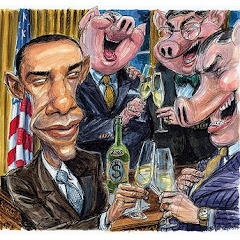




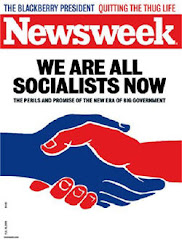
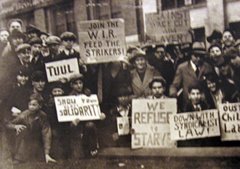








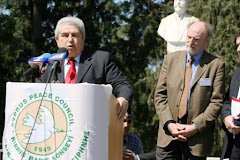














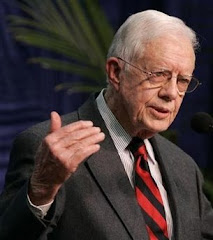













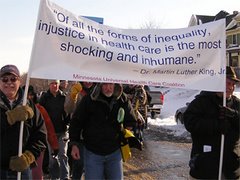
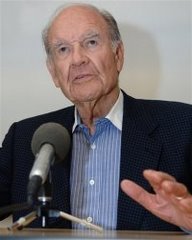

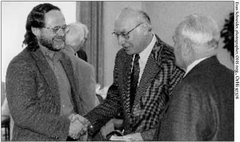















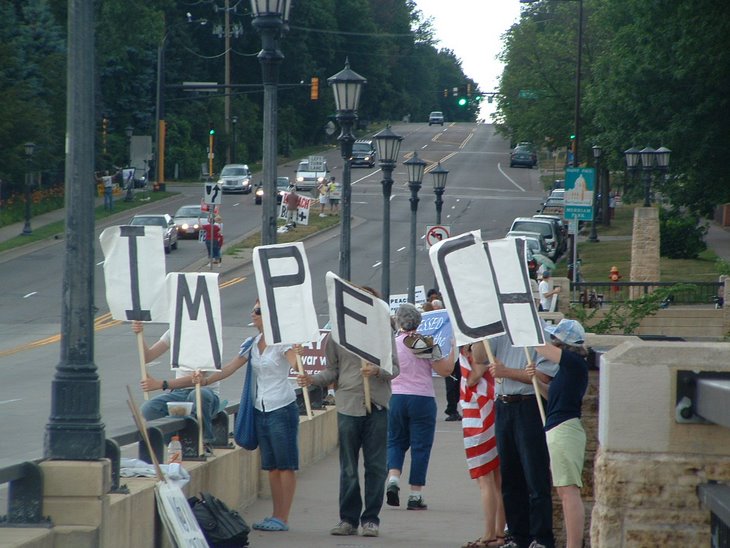
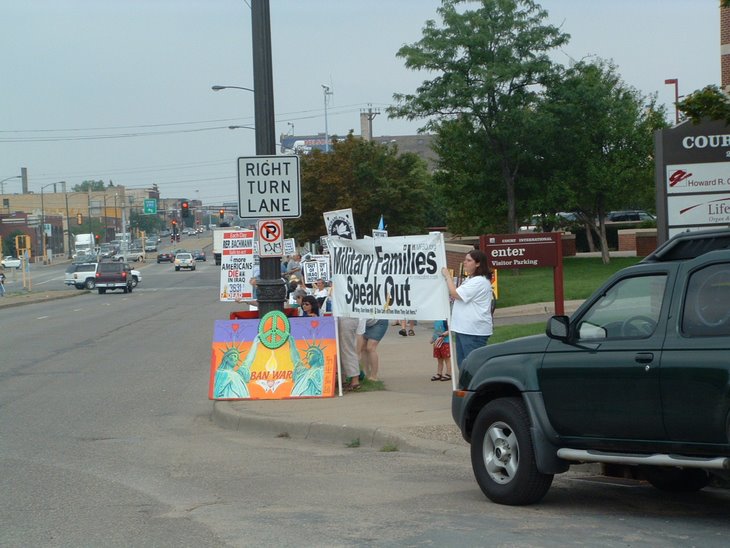



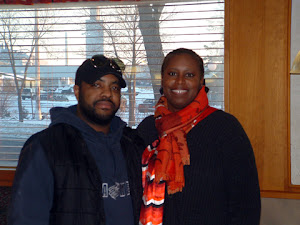
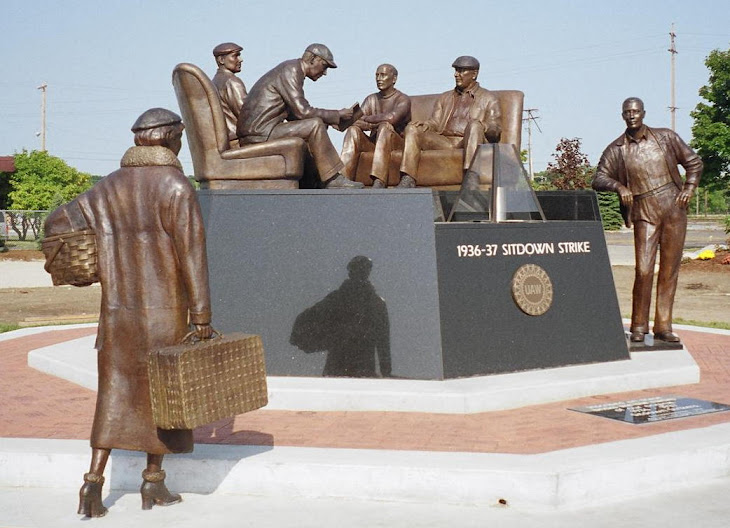








It seems that “jobs” and the wealth of our industry and industrialist/stockholder class is more important than survival of the species.
The single greatest global problem and threat to the environment is war and war preparations. Agent Orange use in the U.S. War in Vietnam killed an area the size of Massachusetts. Genetic damage among ensuing generations has occurred among the Vietnamese.
The burning of the oil fields during Iraq War I is a more recent example. Both Iraqi and U.S. forces suffered the respiratory consequences. No one entity uses more nonrenewal resources than the U.S. Military. All these examples may pale in face of the dangers of spent radioactive material that spew radiation for 1,000s of years.
The explanation of war and its extreme environmental consequences are to be found in the bowels of capitalism. The tendency of rates of profits to fall send competing capitalist elements around the globe seeking to stop this trend. Going to places whose people are not in a position to defend nature is their “solution.”
An unfortunate example now is the so-called “pivot to Asia.” The U.S. Administration is deploying up to 60% of its military force there. Why? It is looking to exploit natural resources such as oil and gas.
War and war preparations along with peace and peace making construct one dialectical whole. The resolution of this contradiction in favor of peace is of major importance to the many who place nature before profits. Here lies the material basis for cooperation between the labor, peace and environmental movements. The blue-green alliance is one result that needs much more attention in our work both on state and local levels.
Socialism has the best chance to do it right vis a vis the environment. Its thrust for social solidarity and raising the cultural/educational level of all the people can only bode well for the environment. Of course, there are no guarantees. Immersion in environmental struggles would be the best determiner of a Left and peoples movement with a deep environmental consciousness.